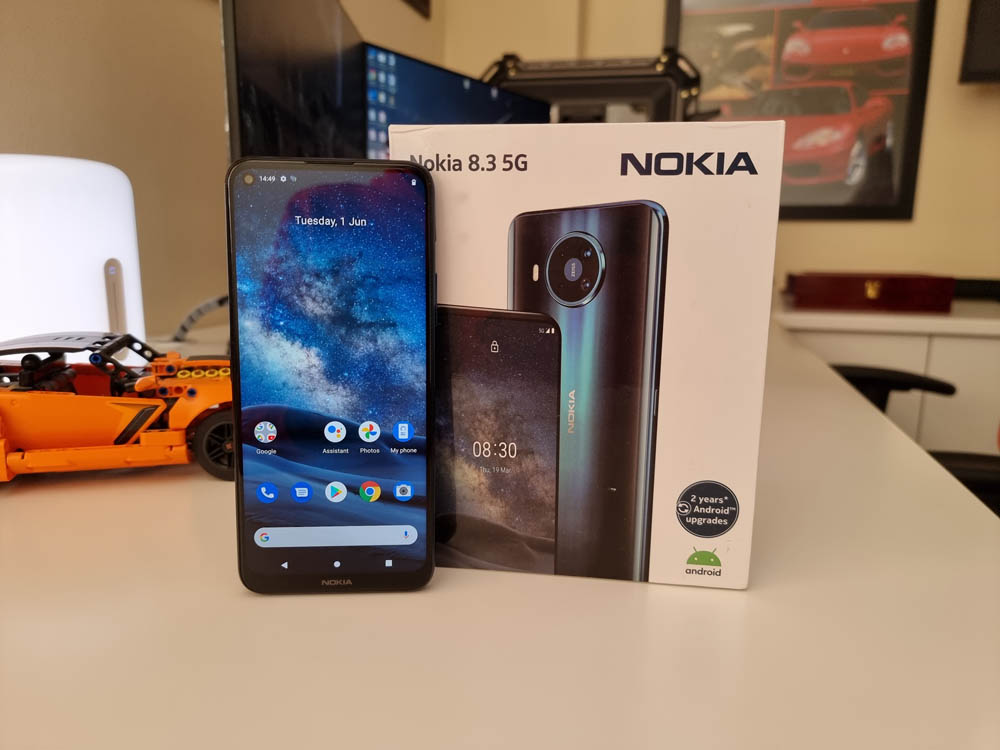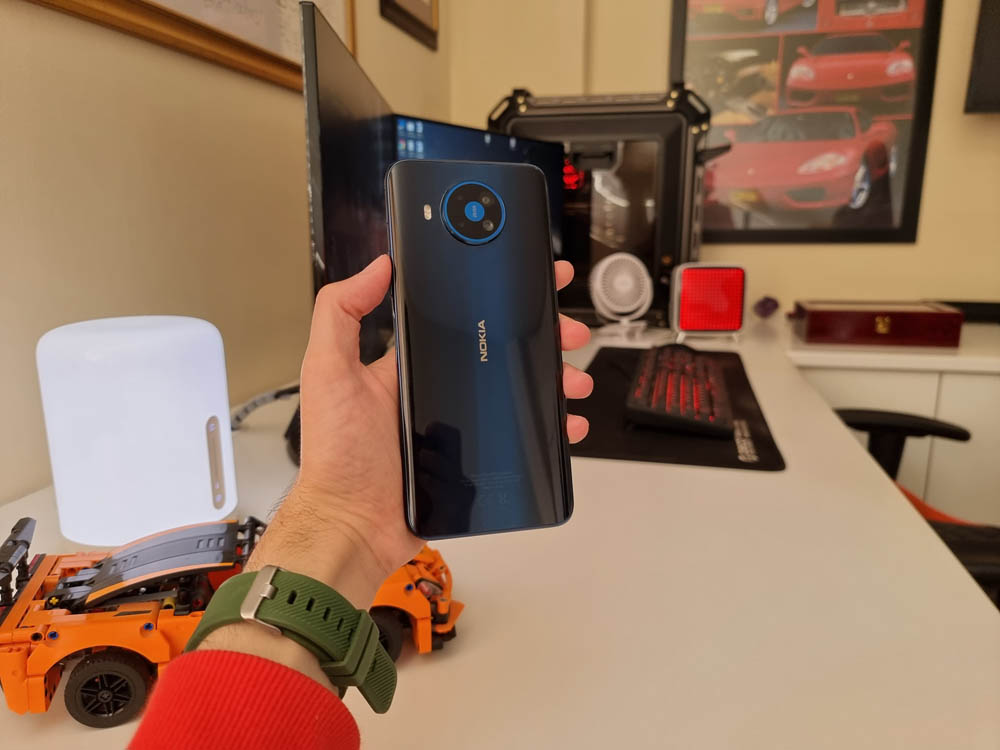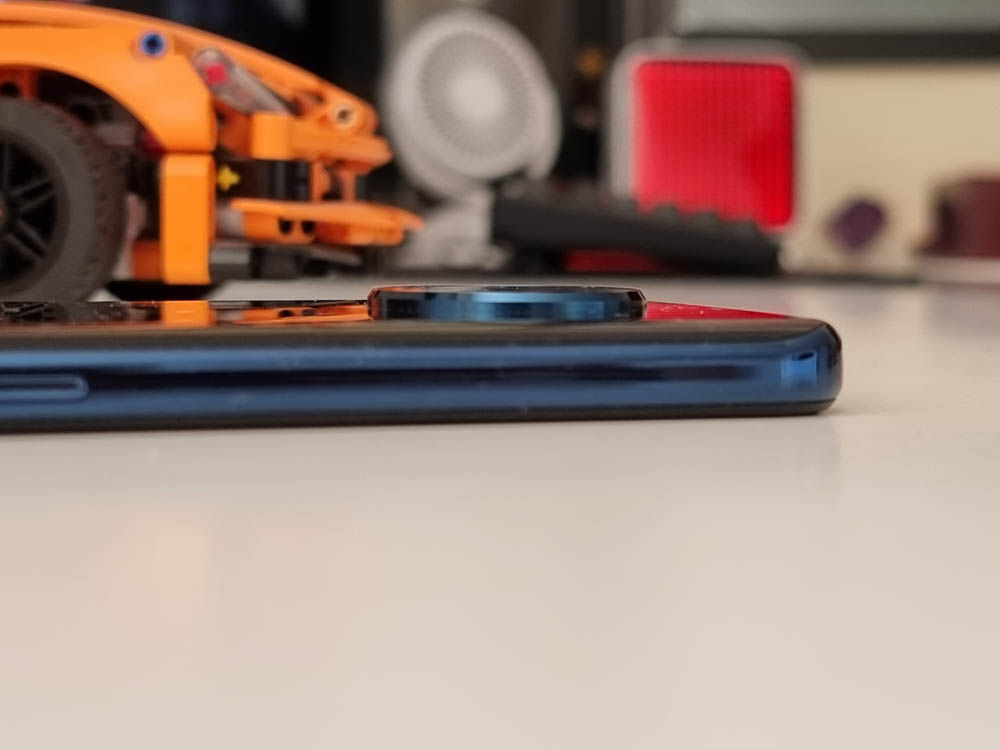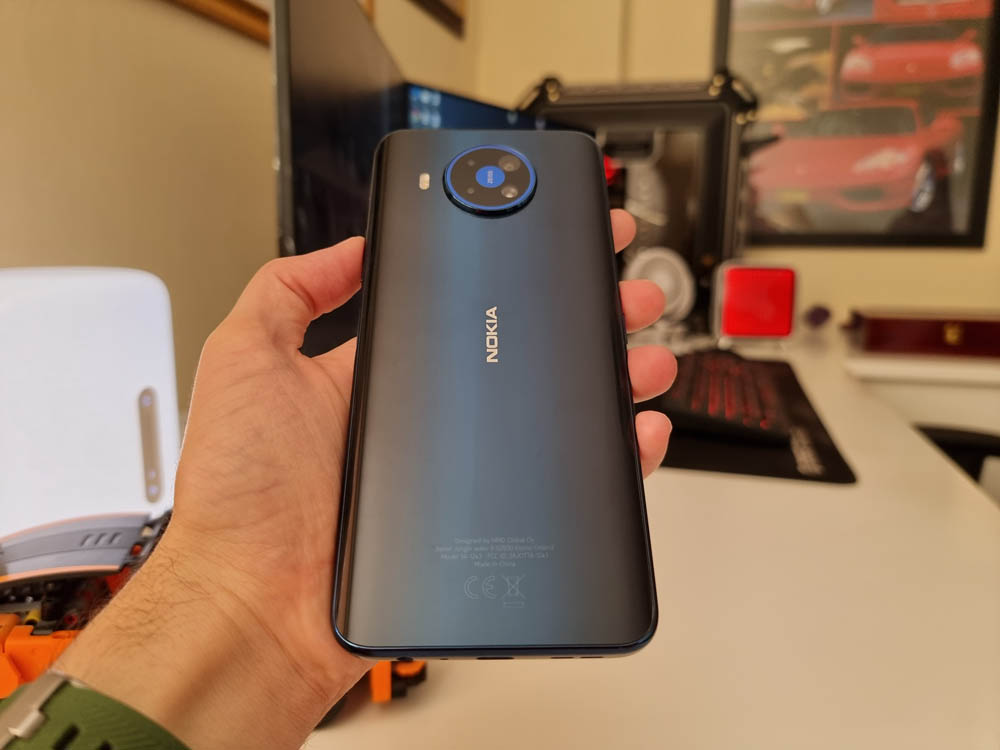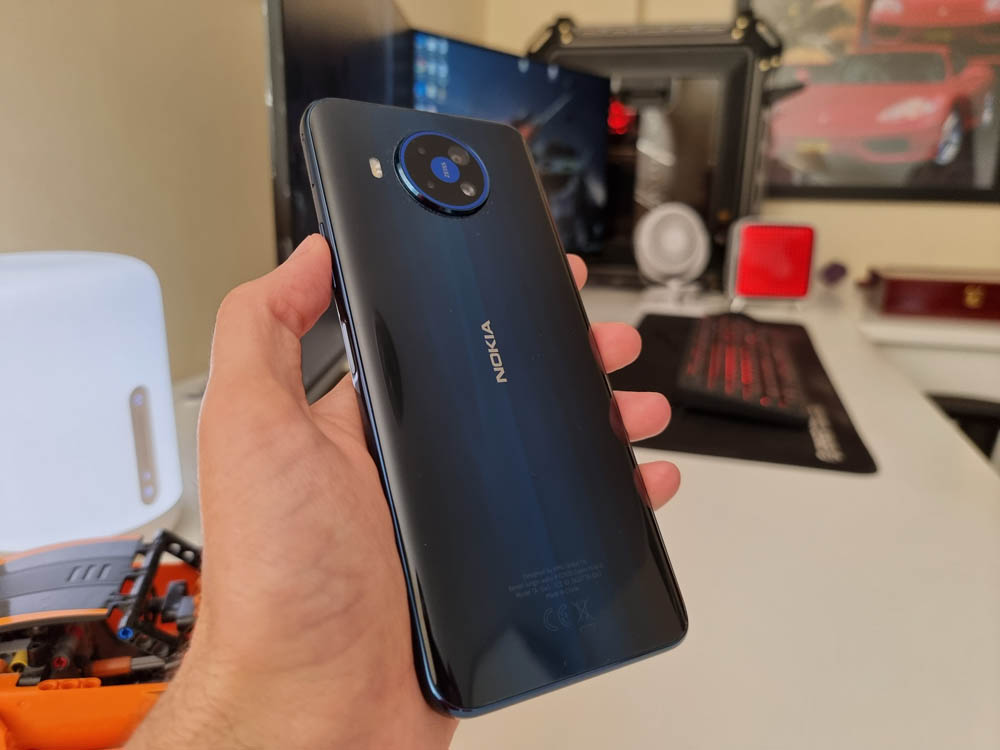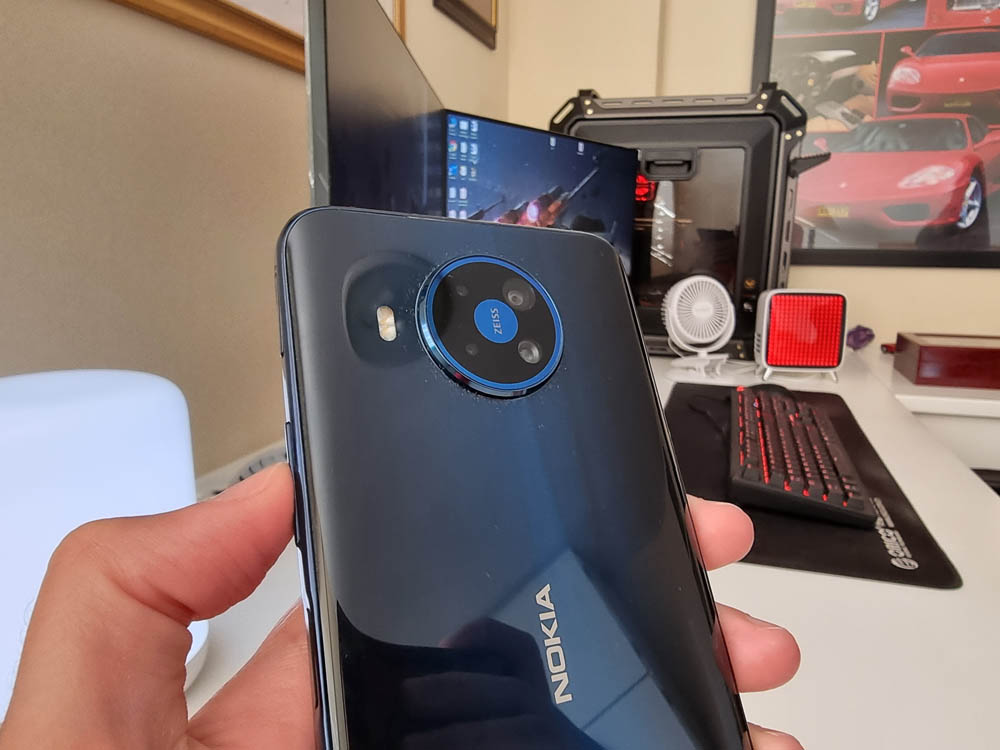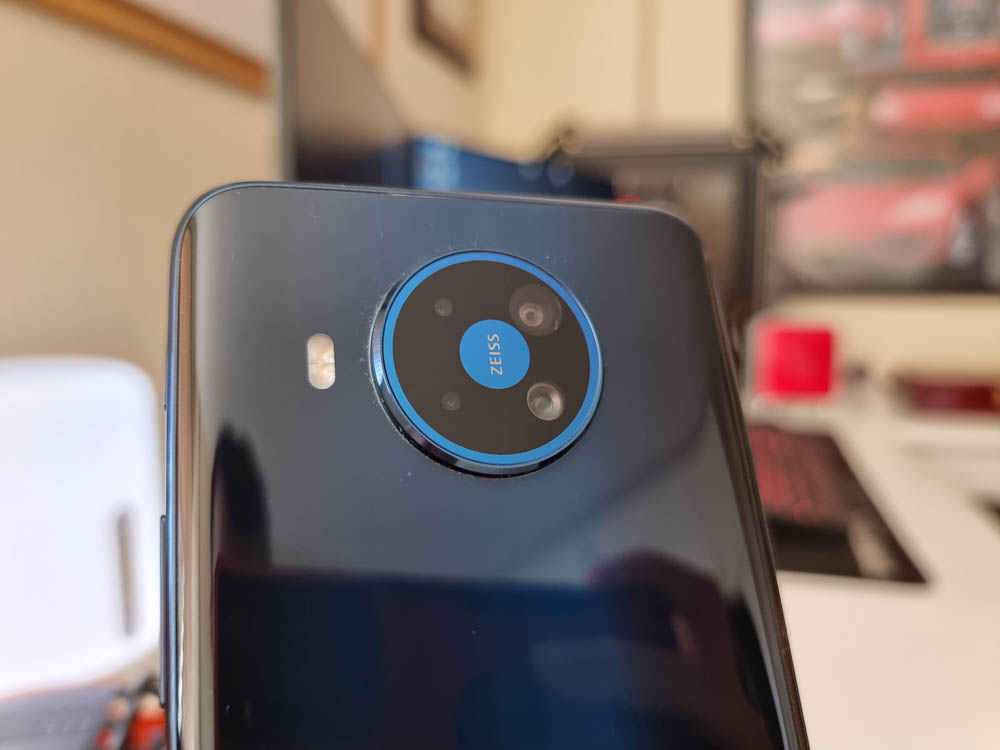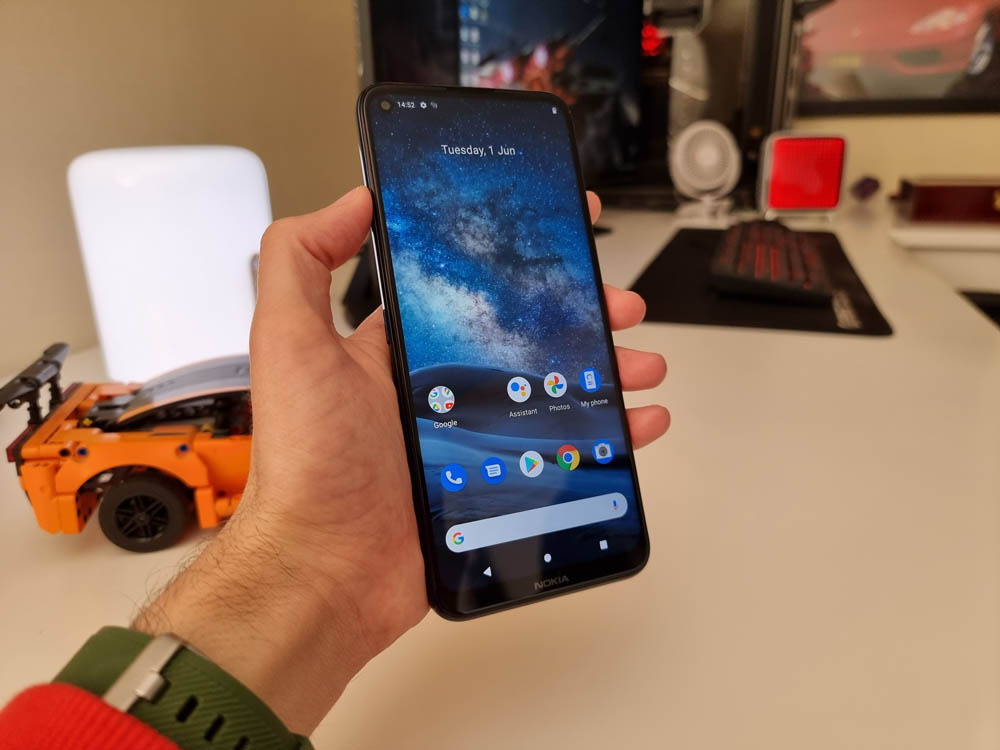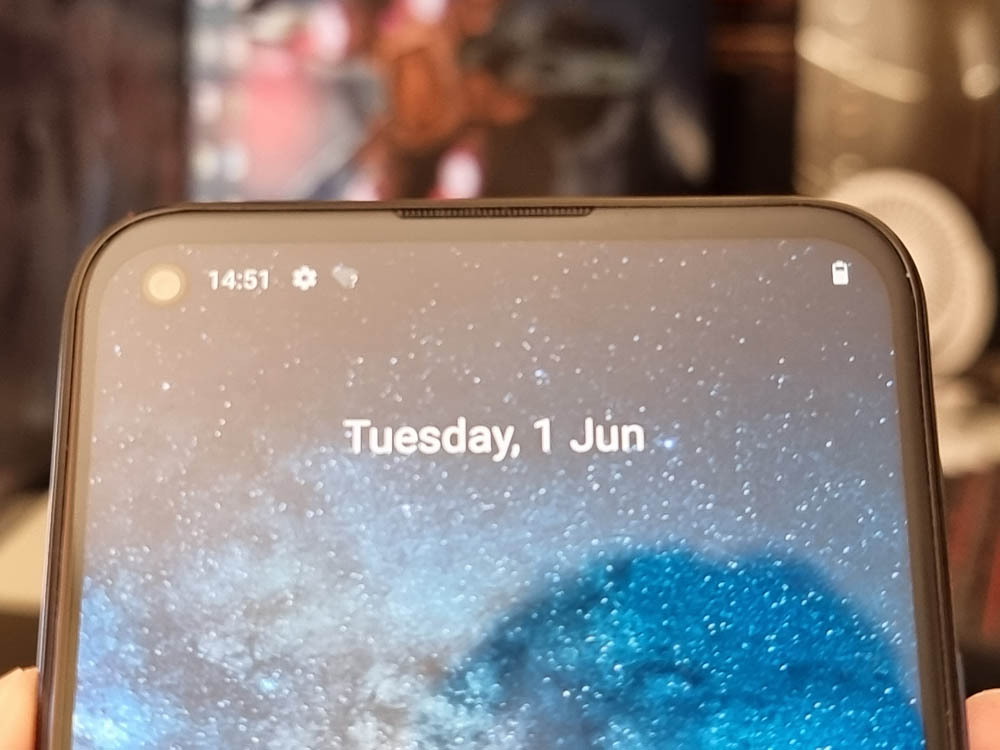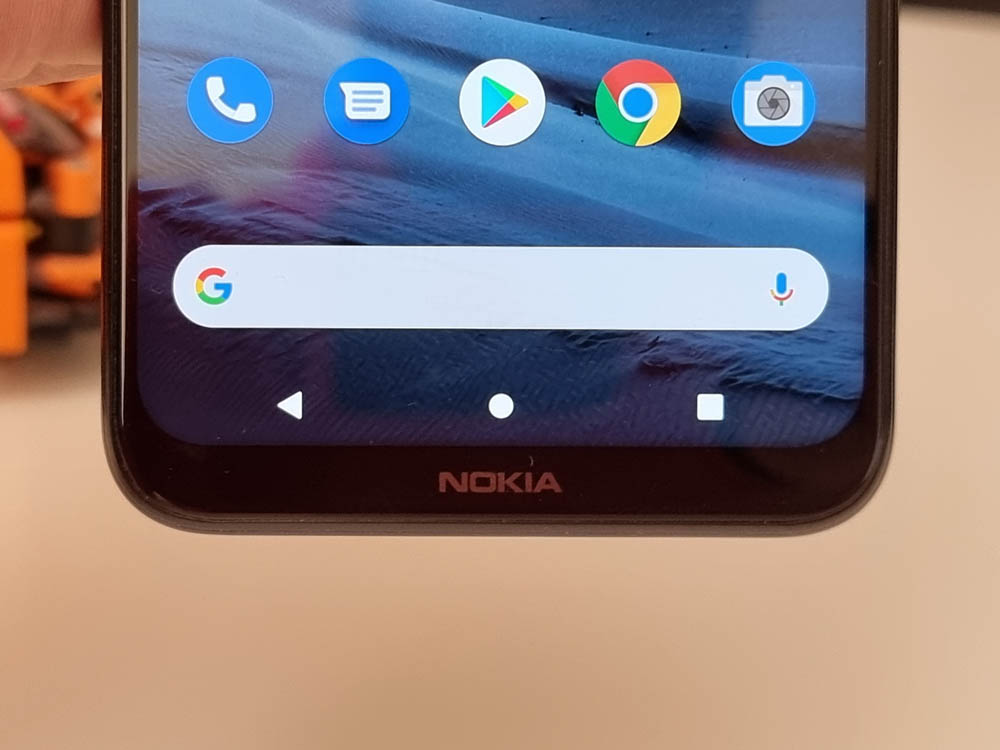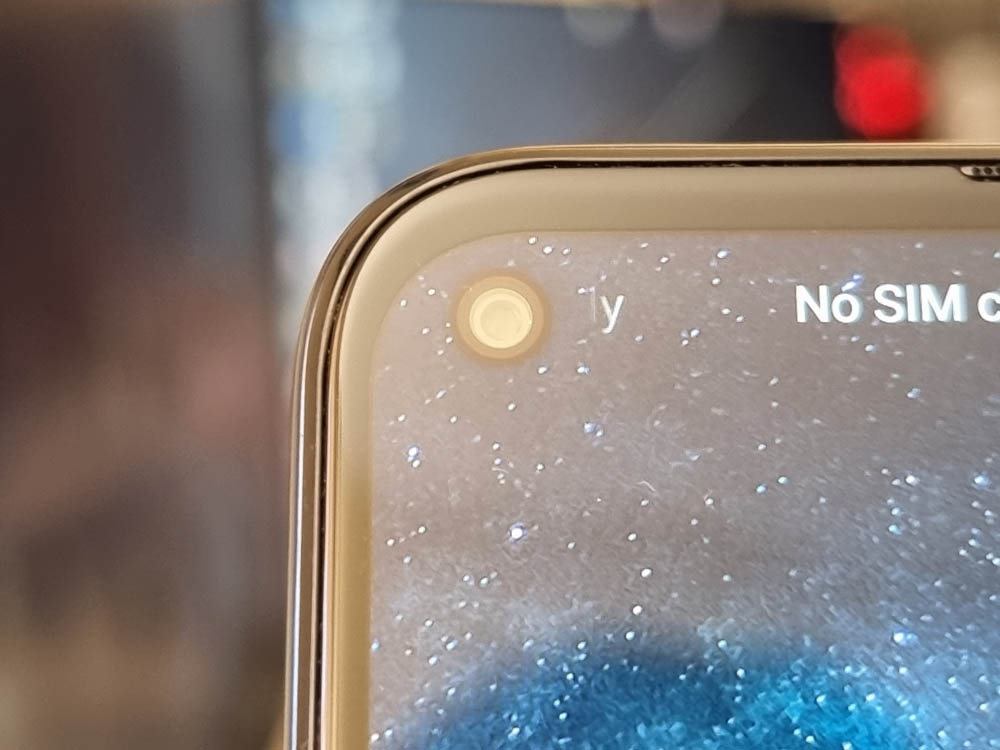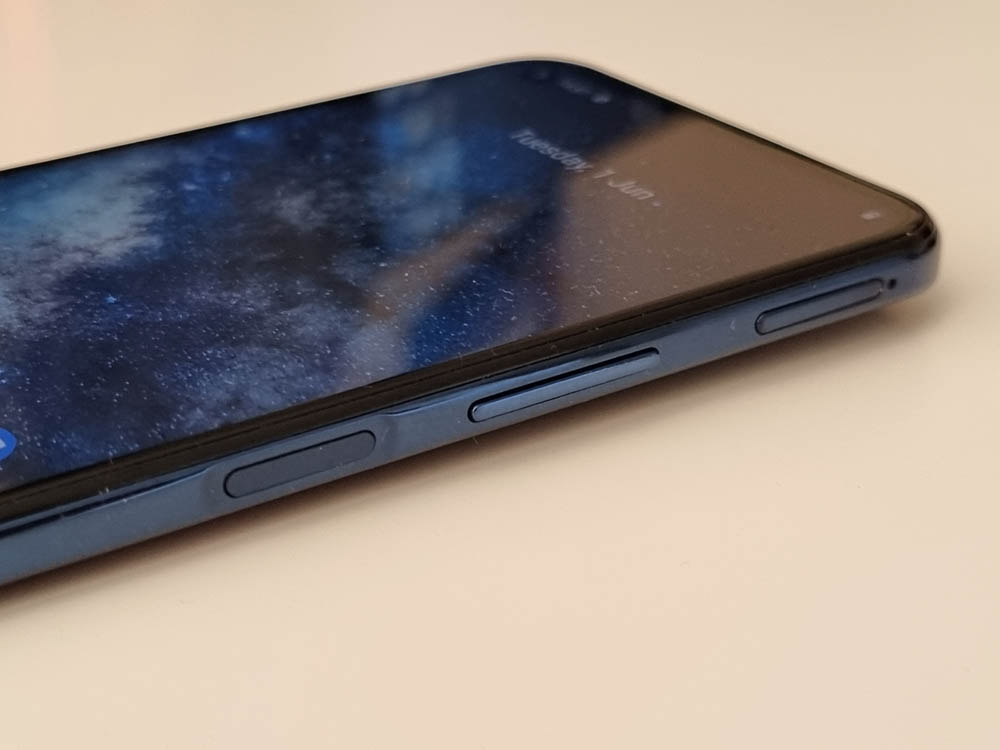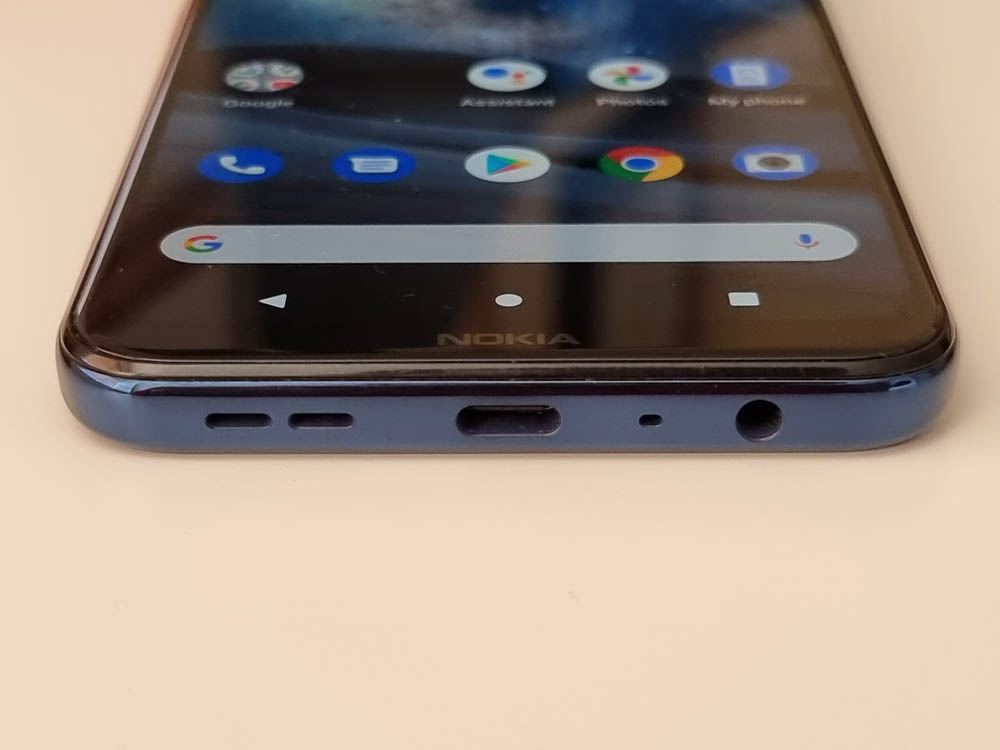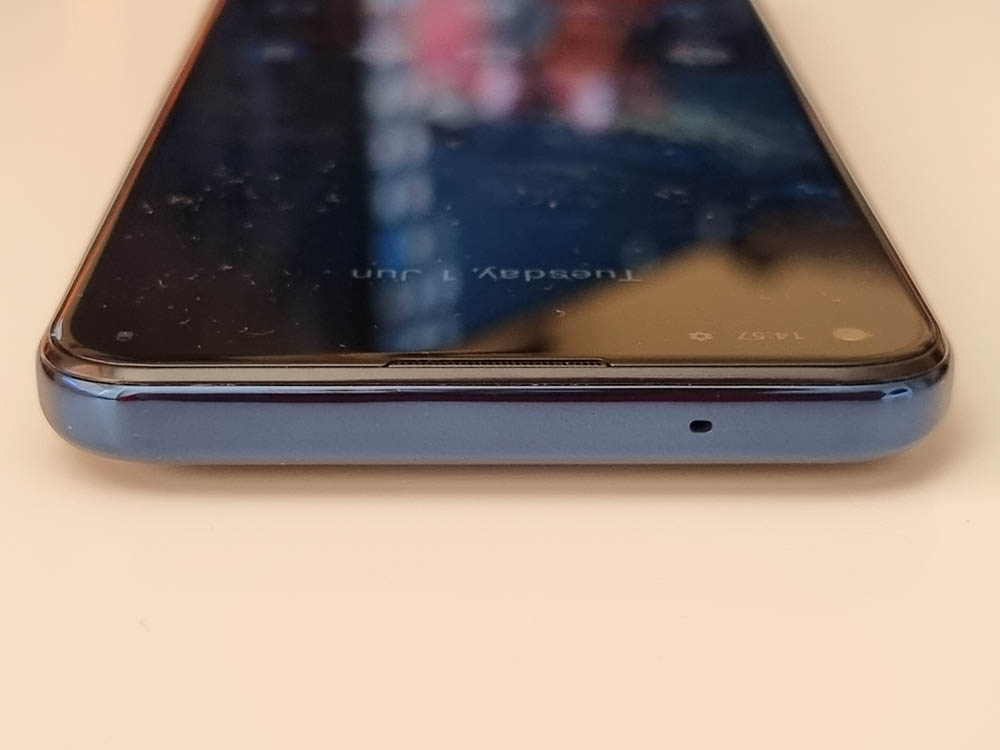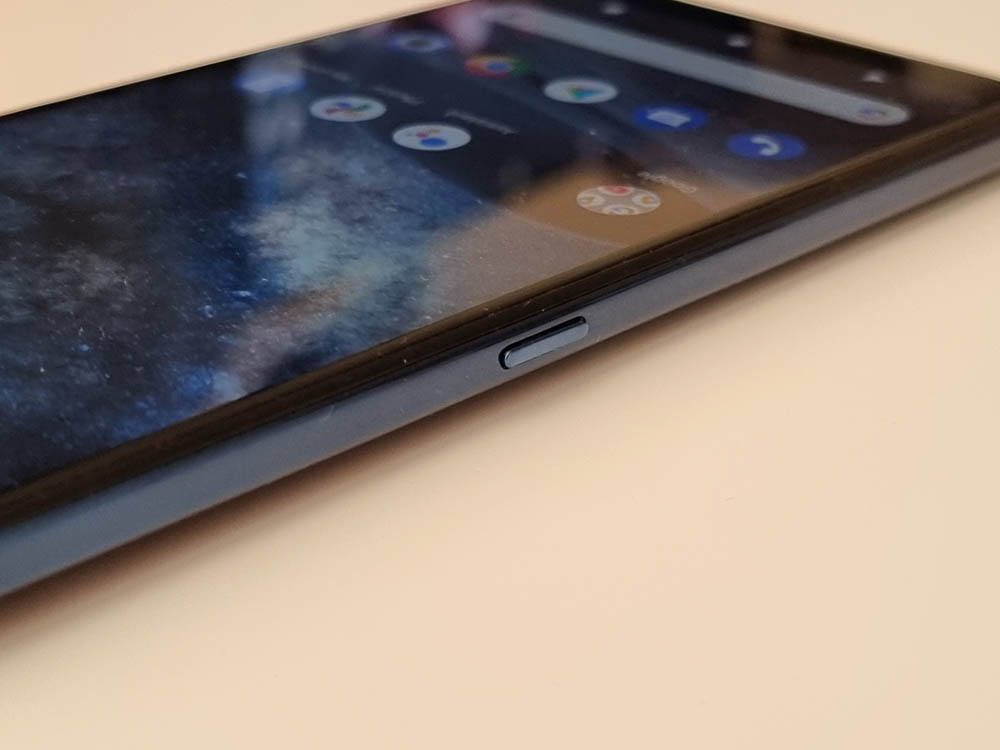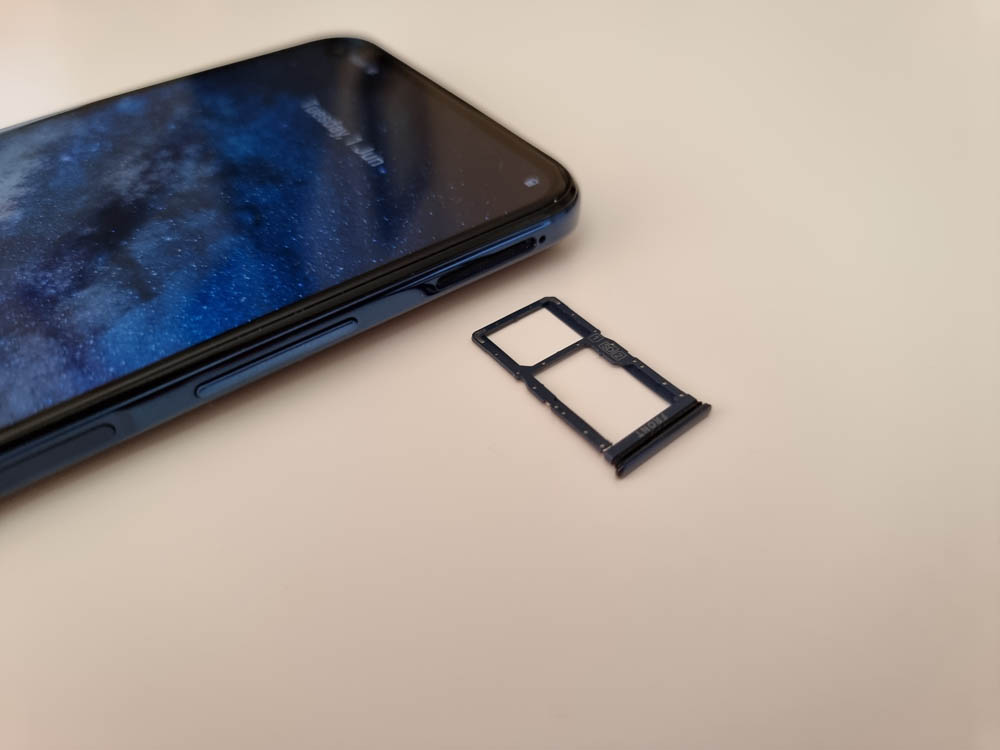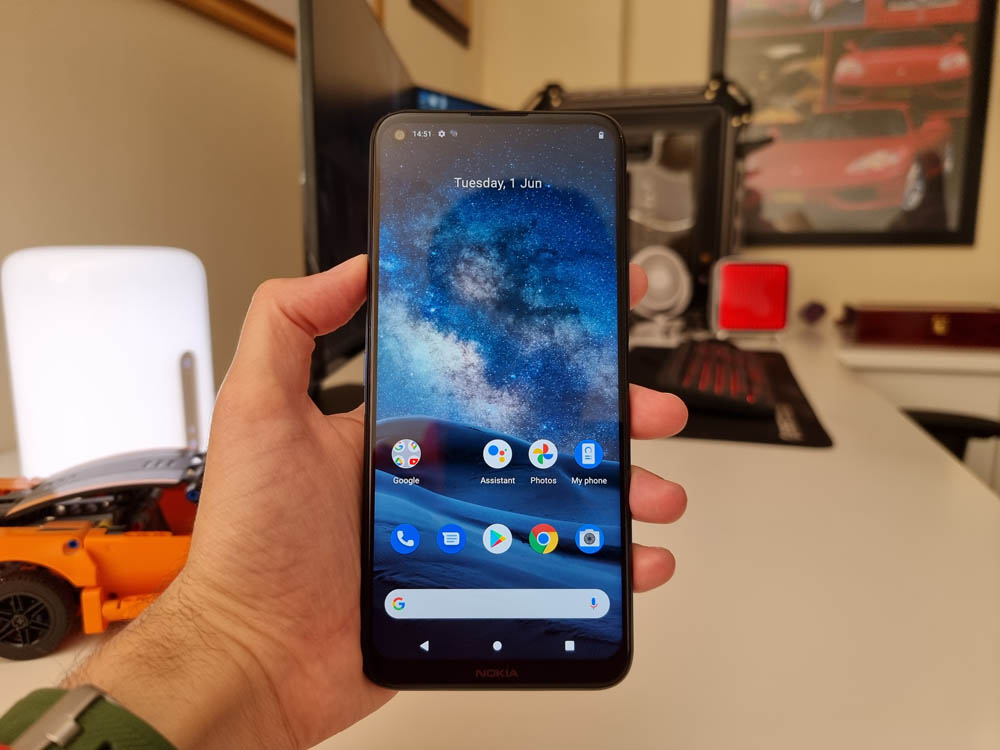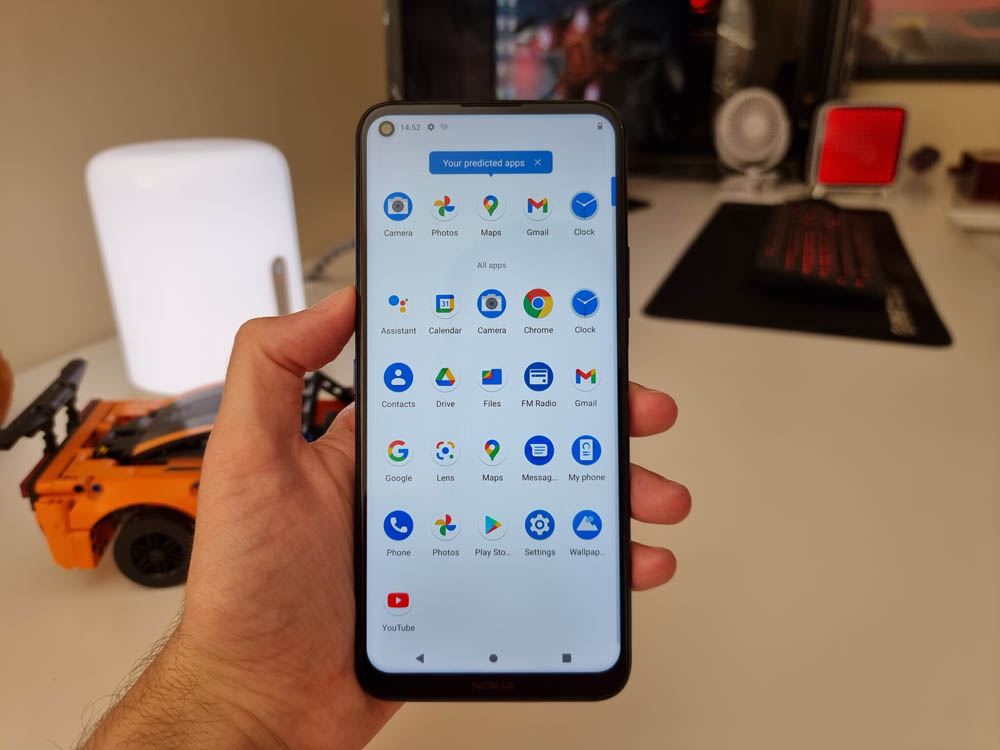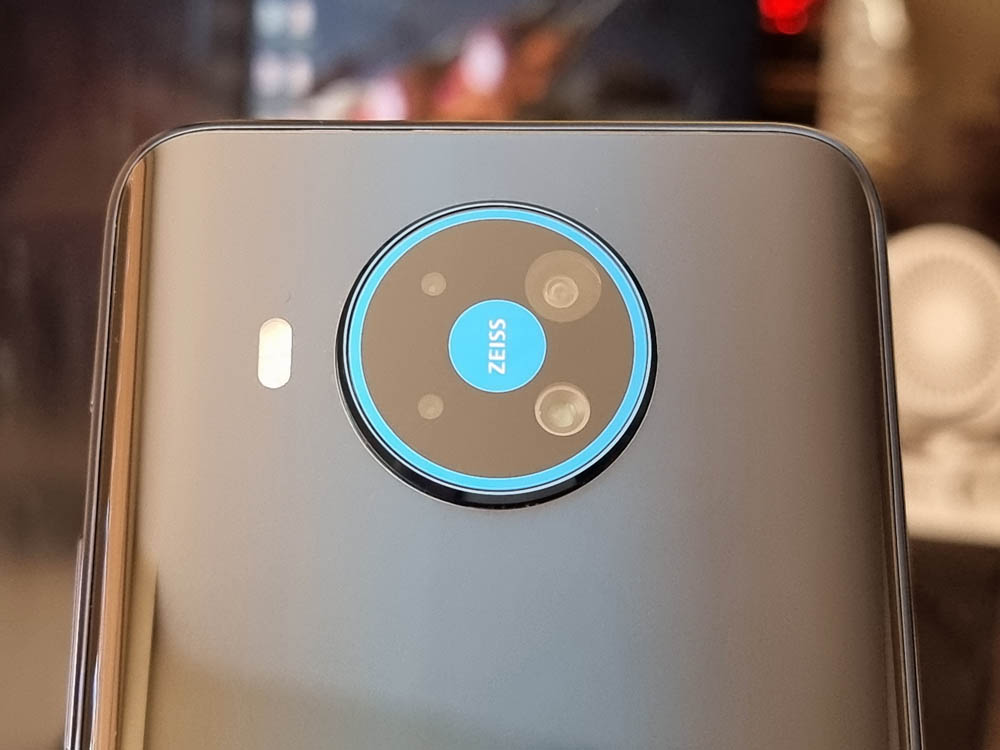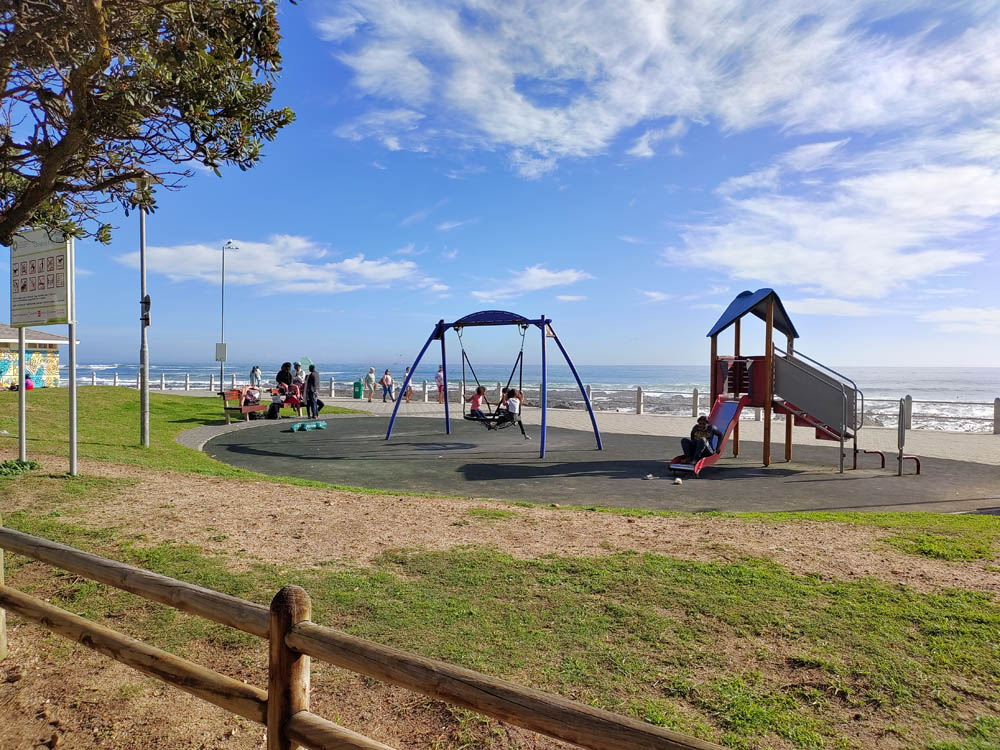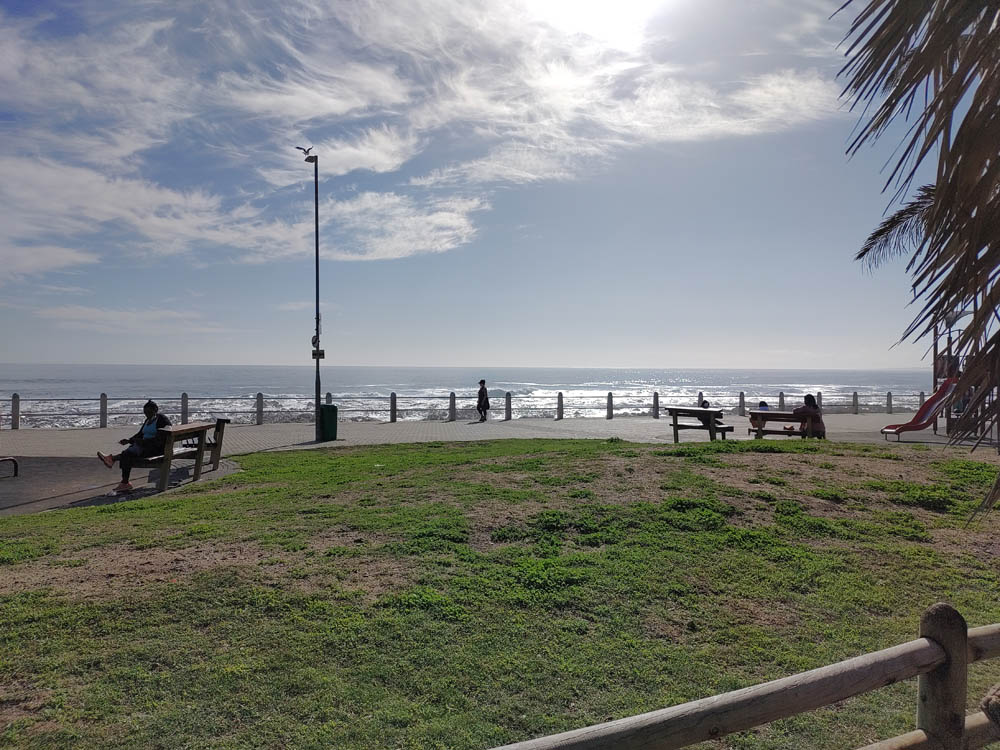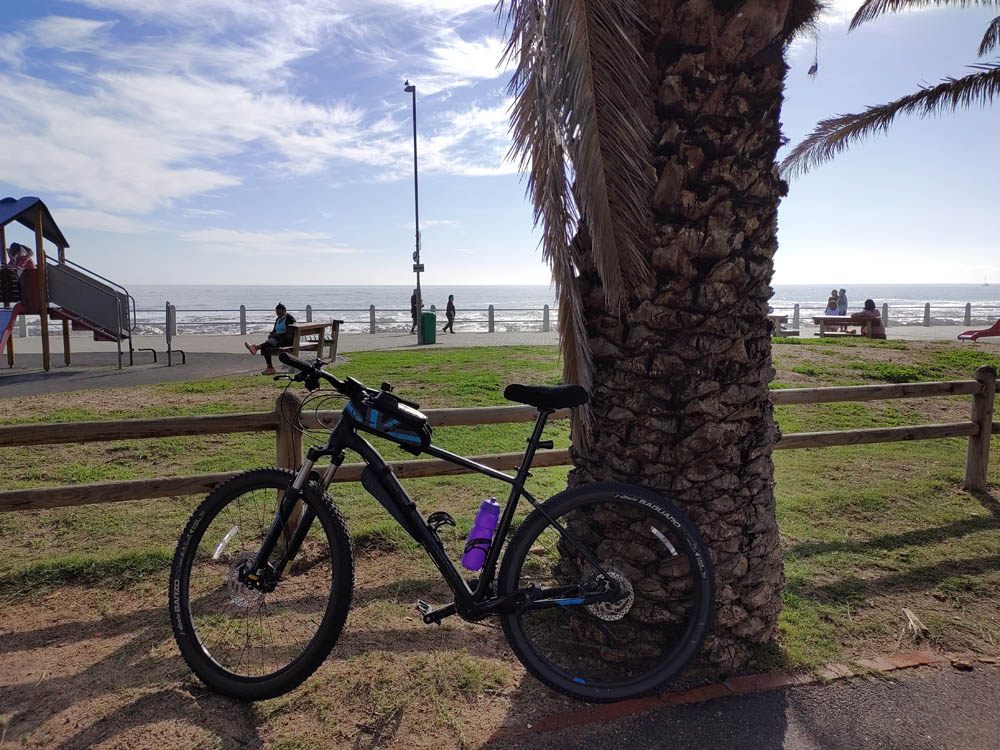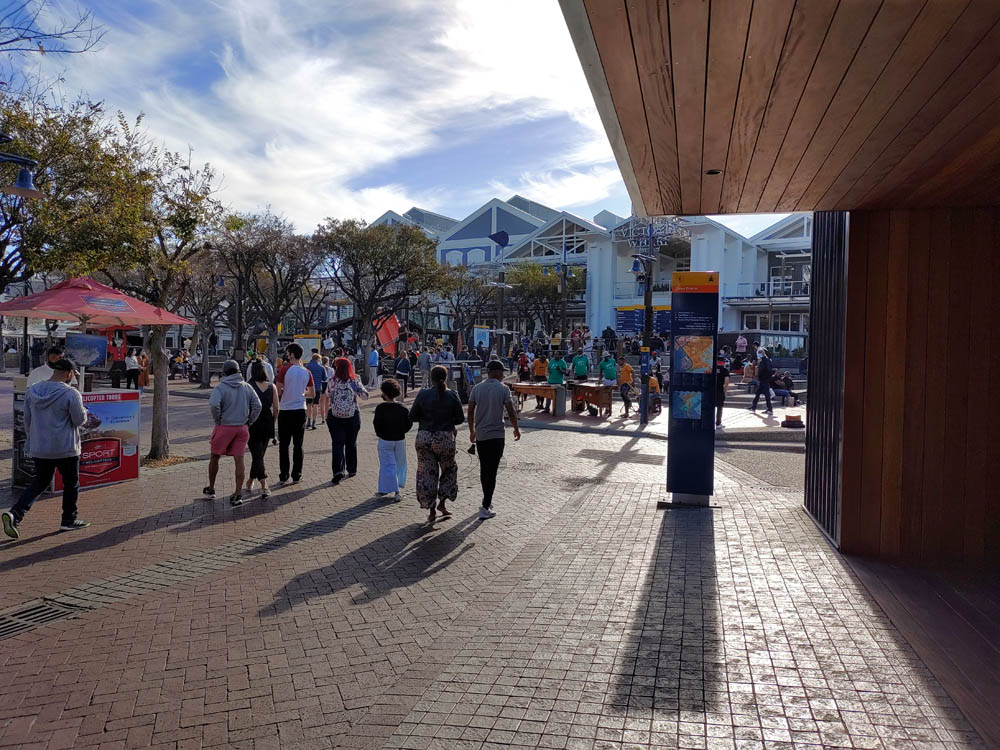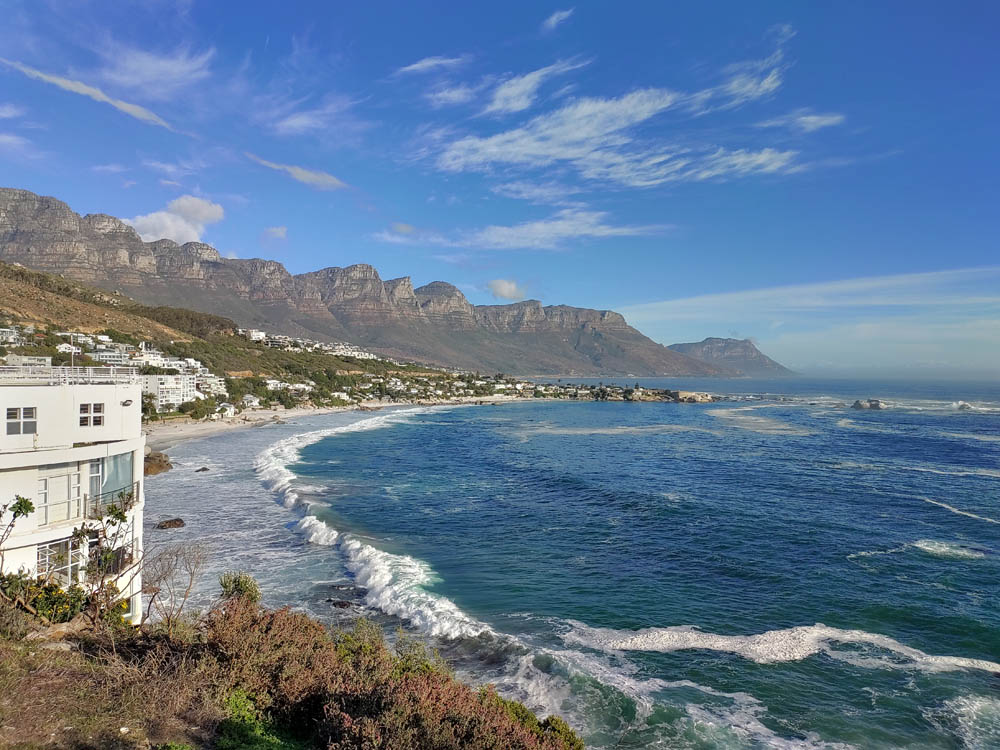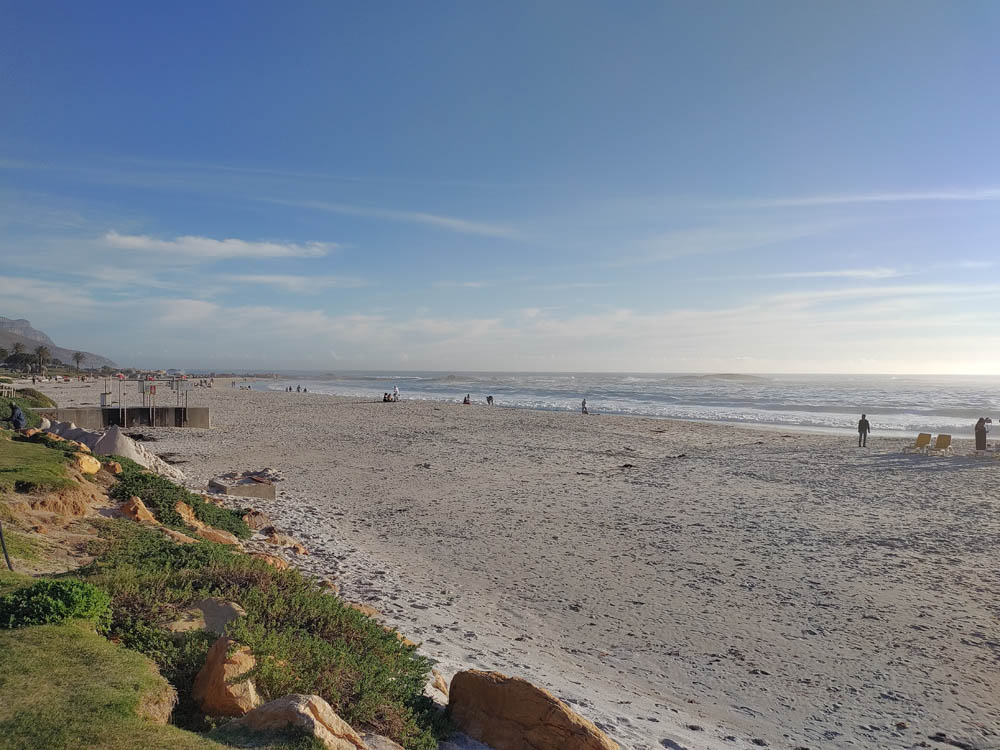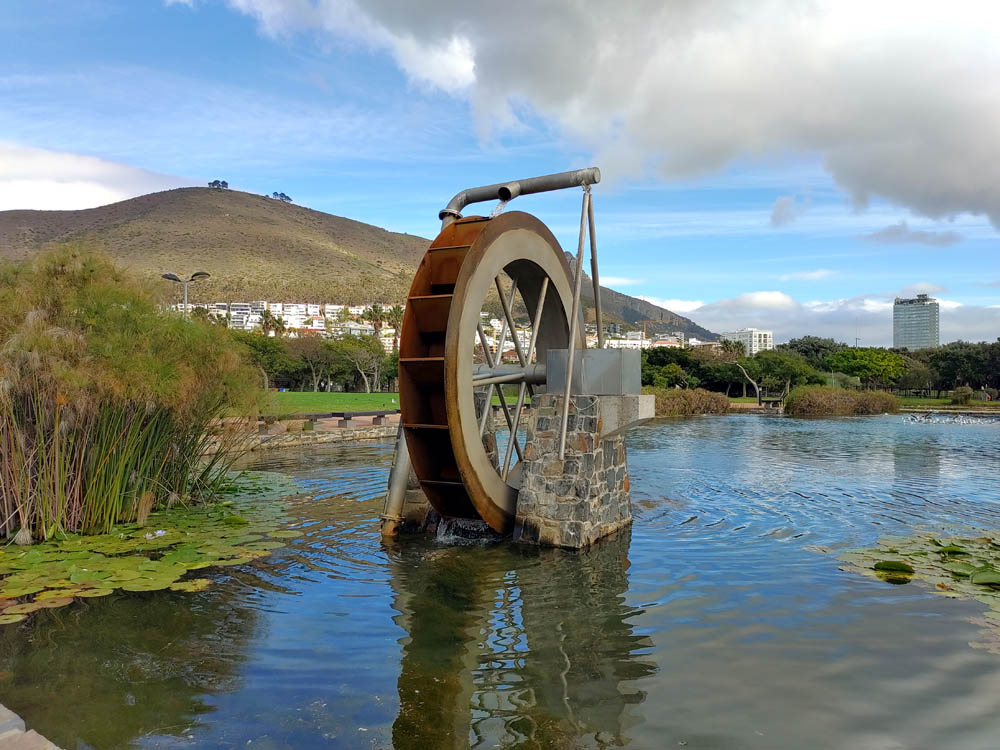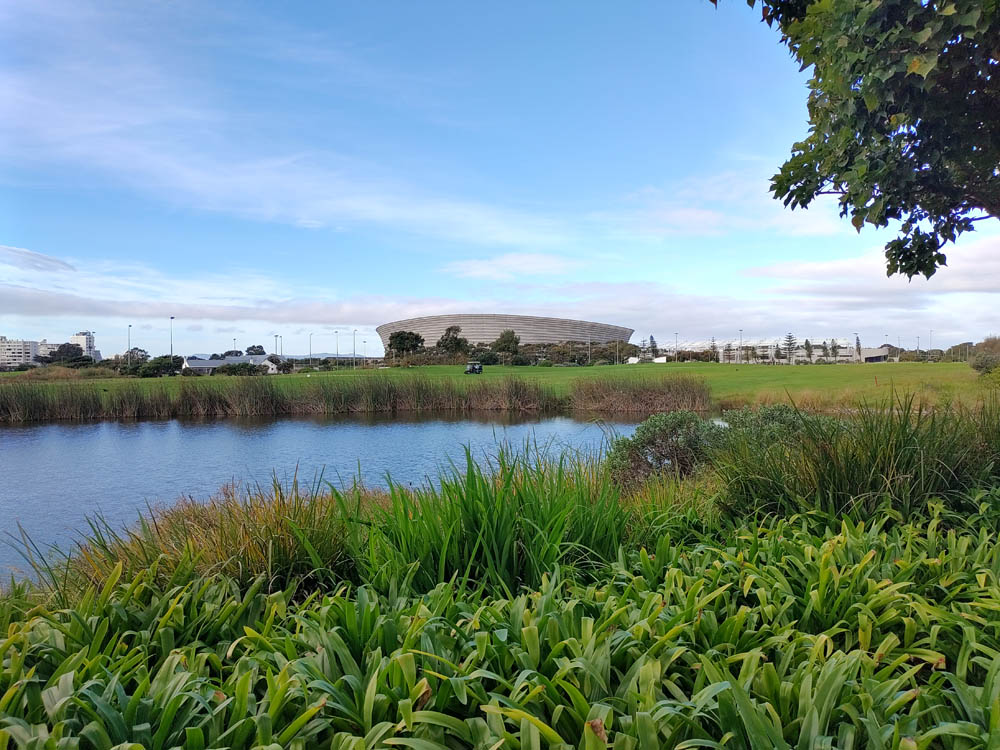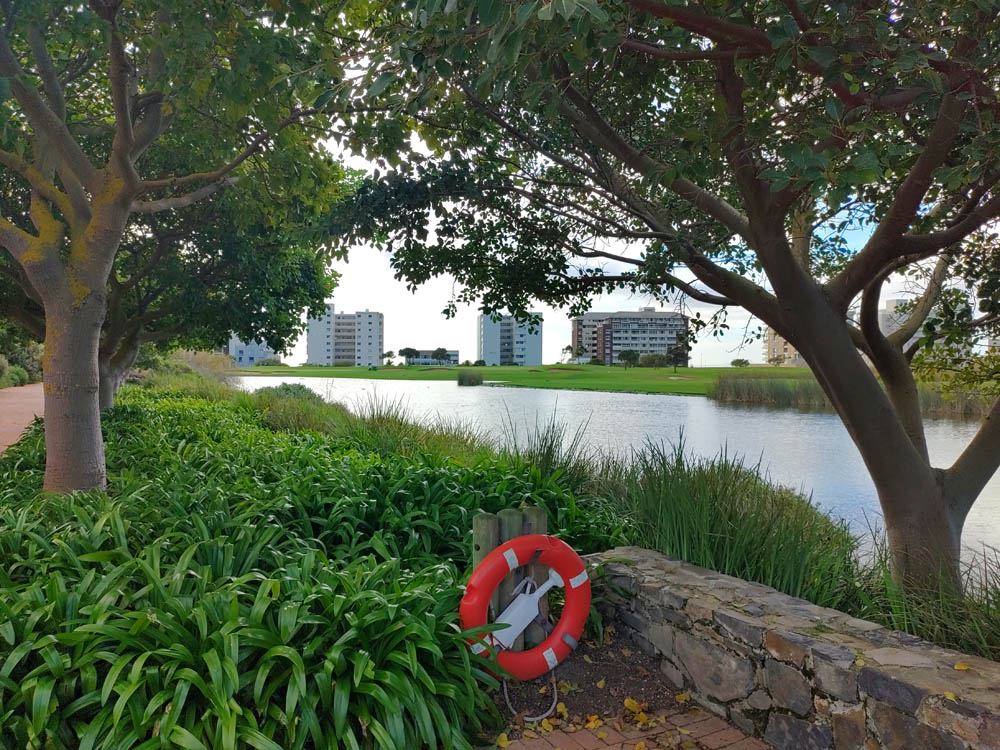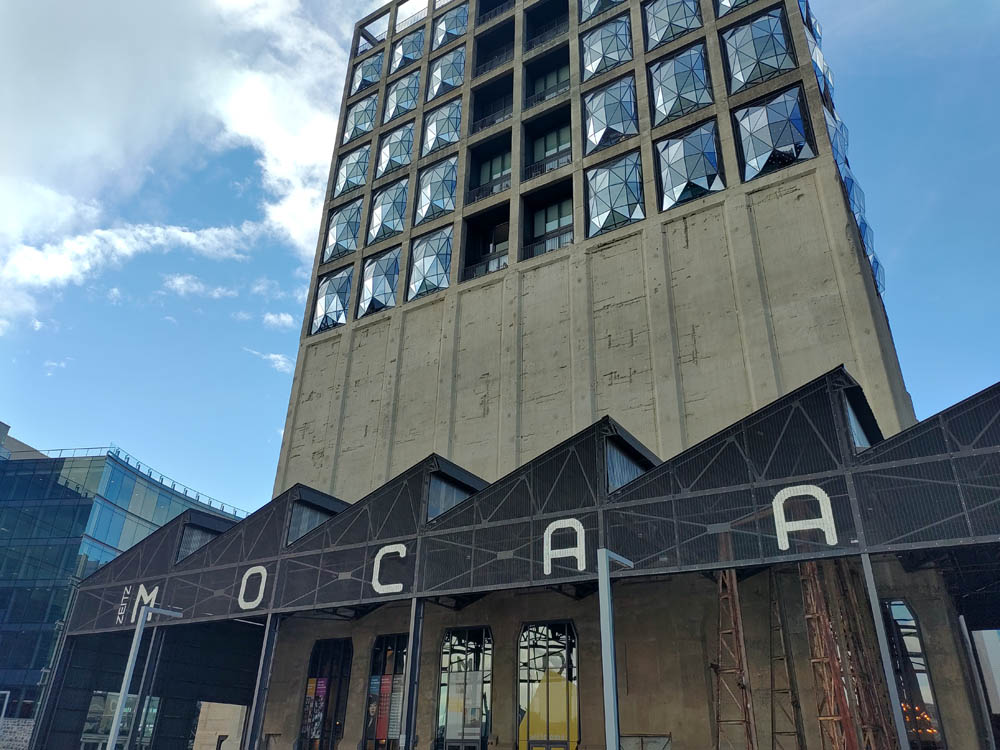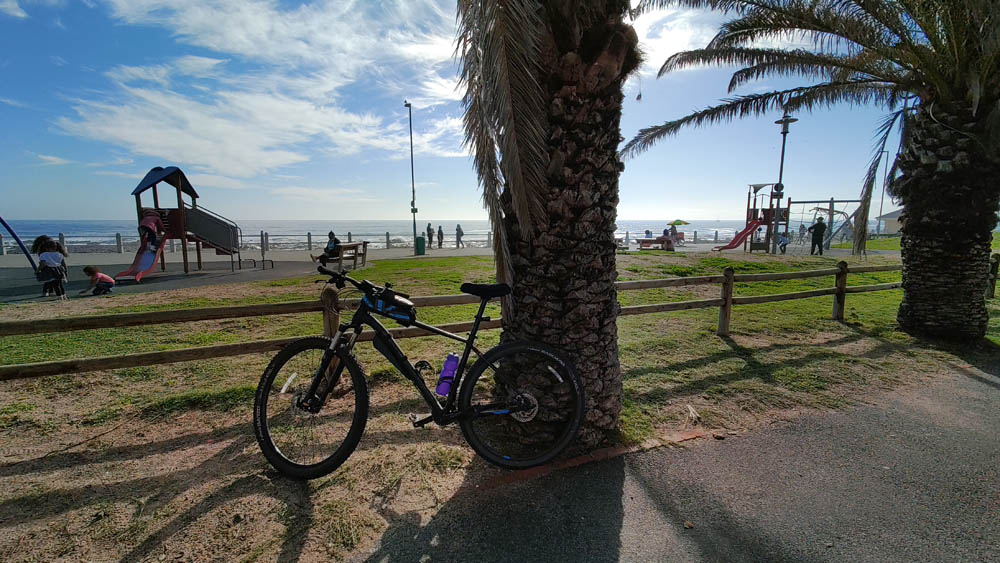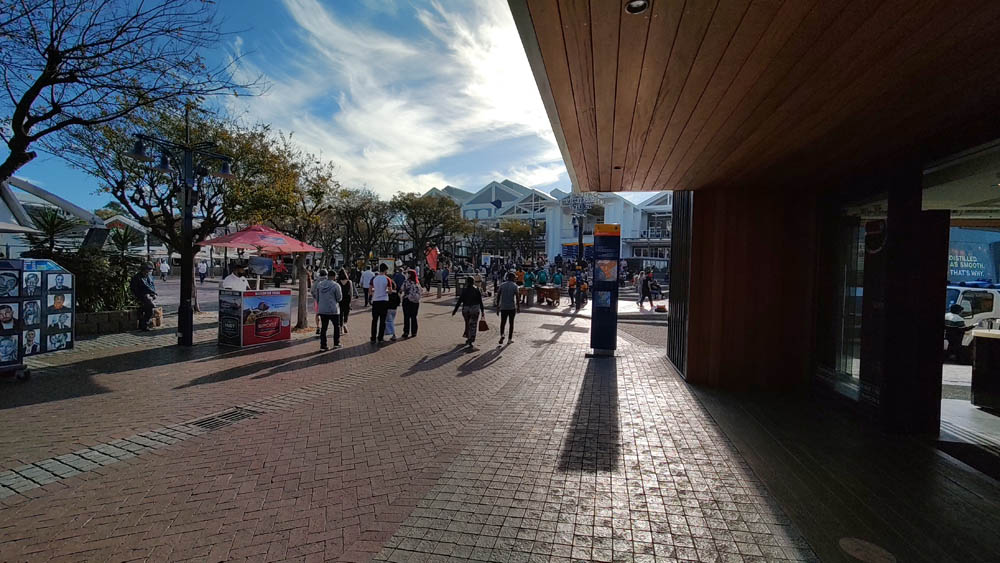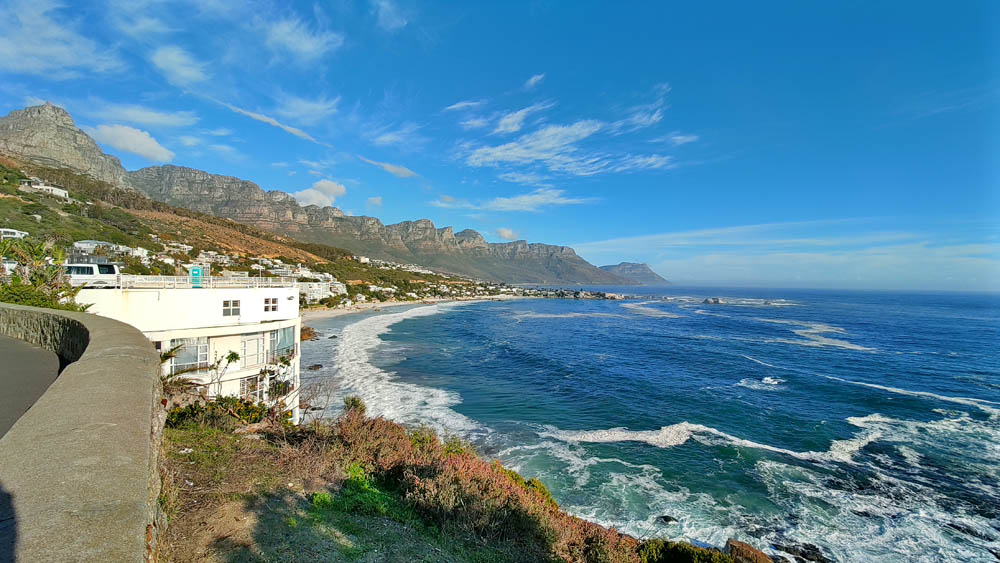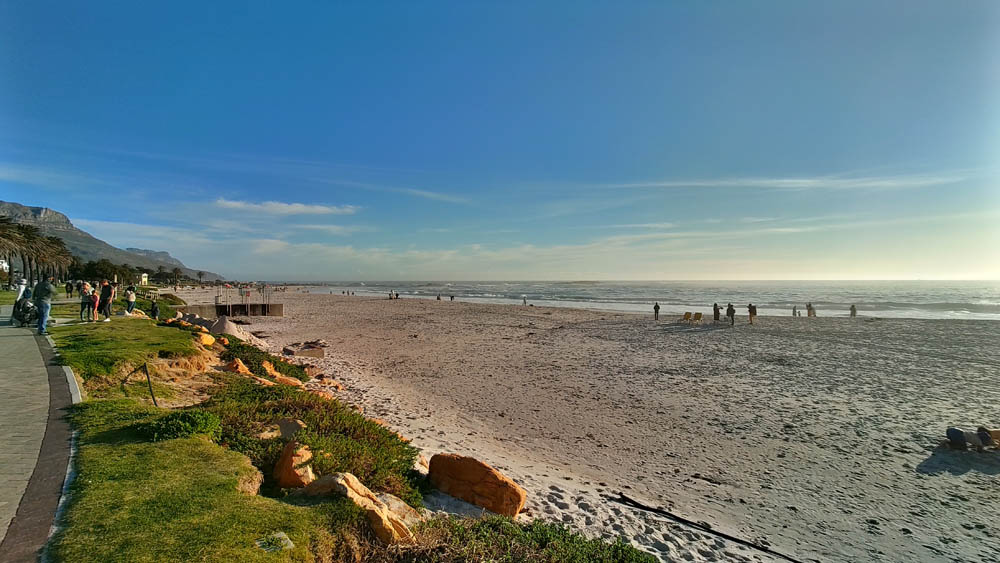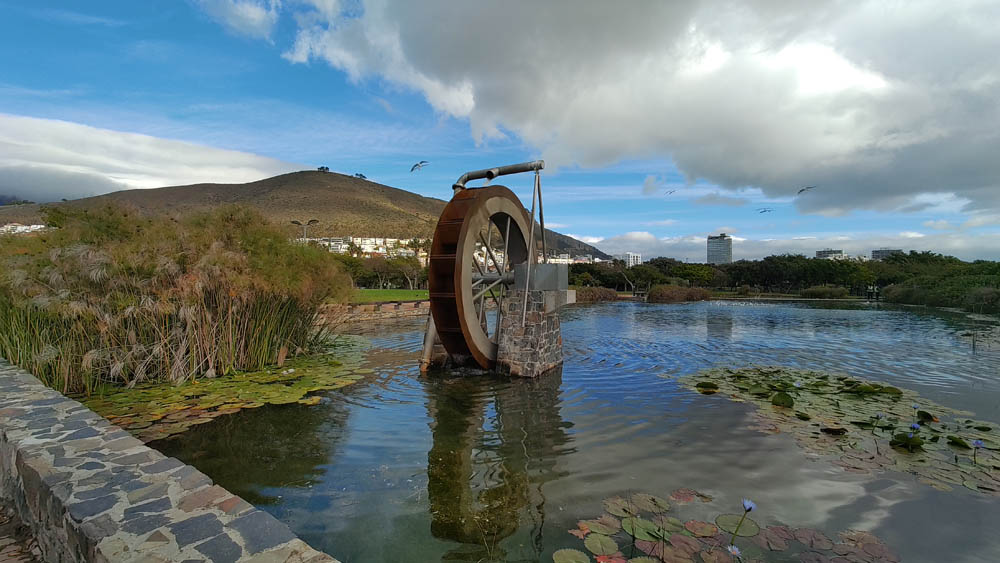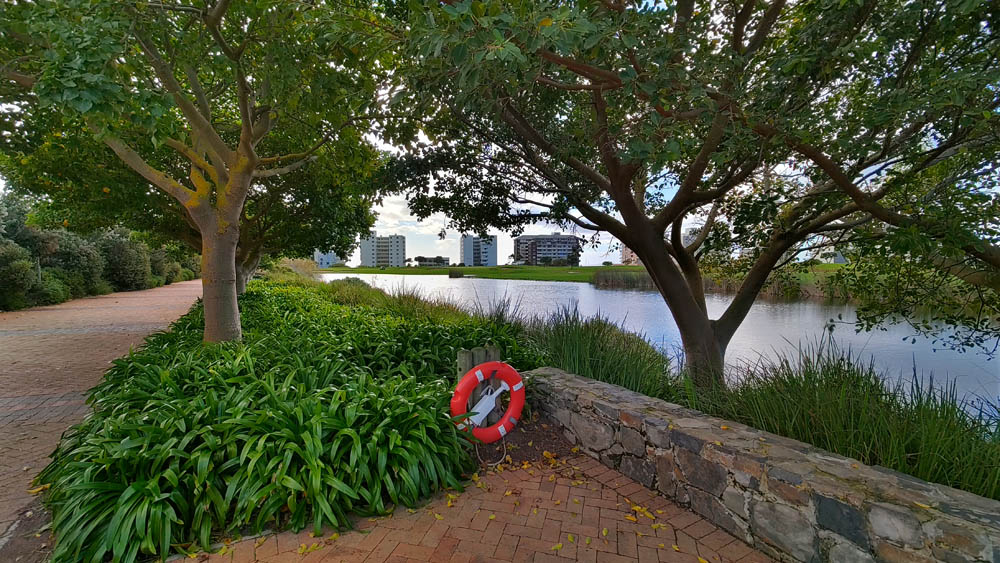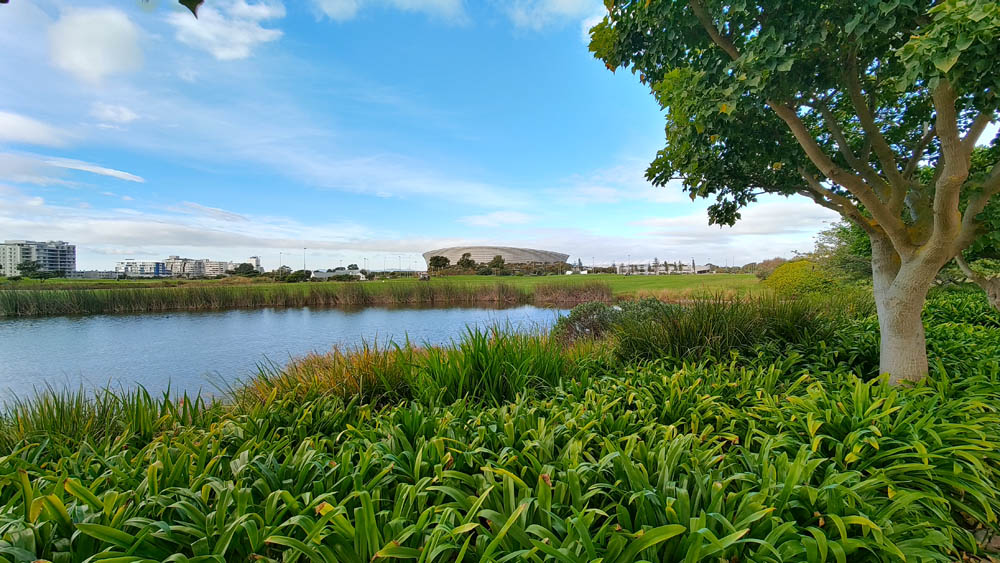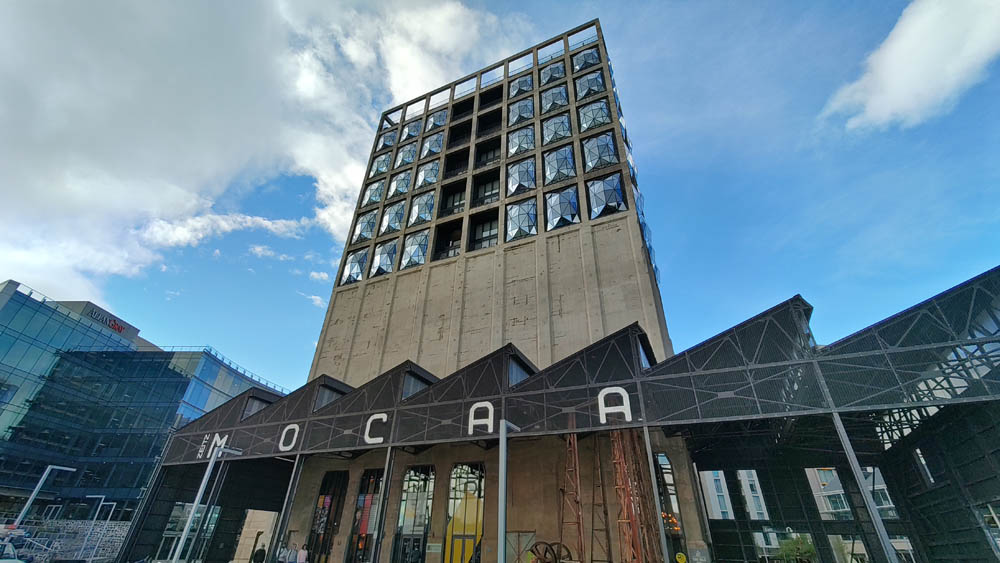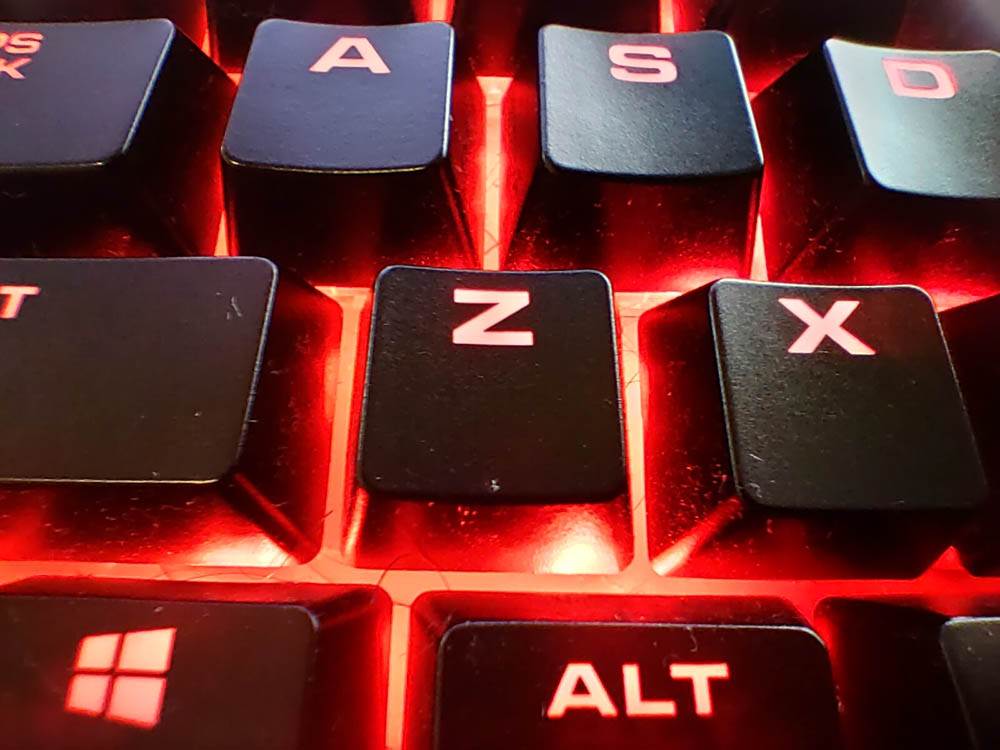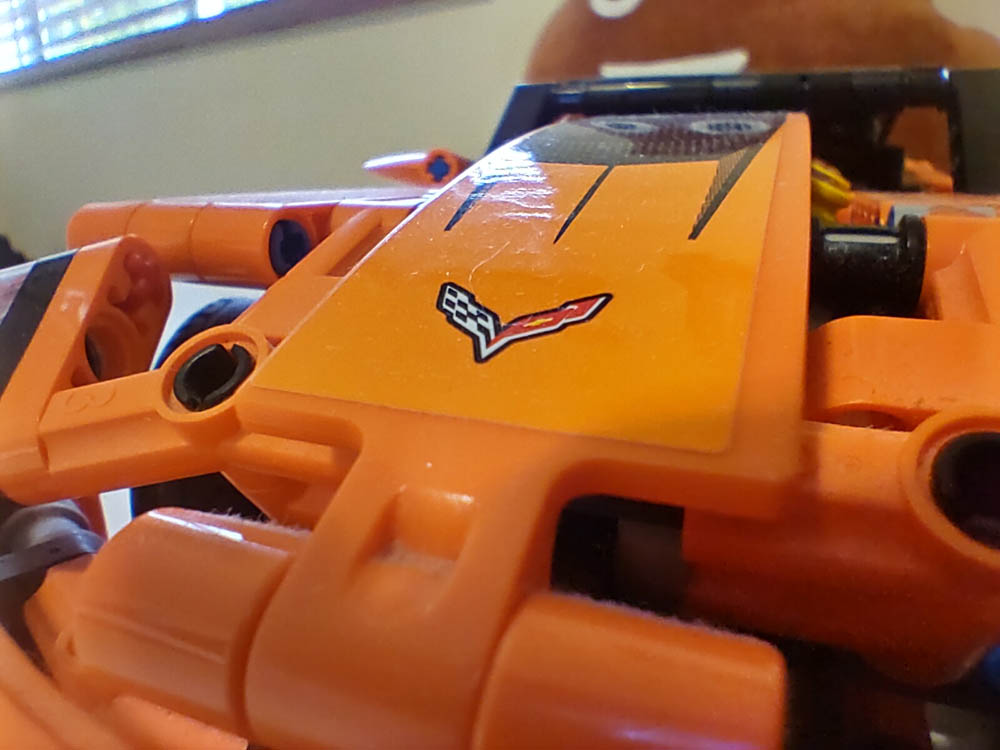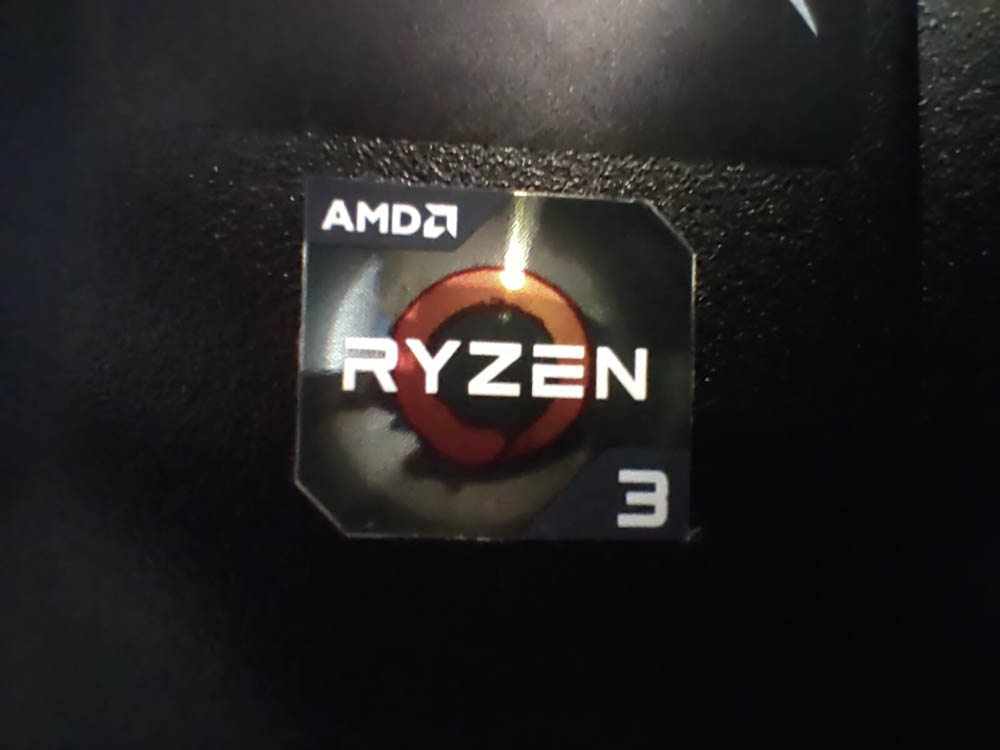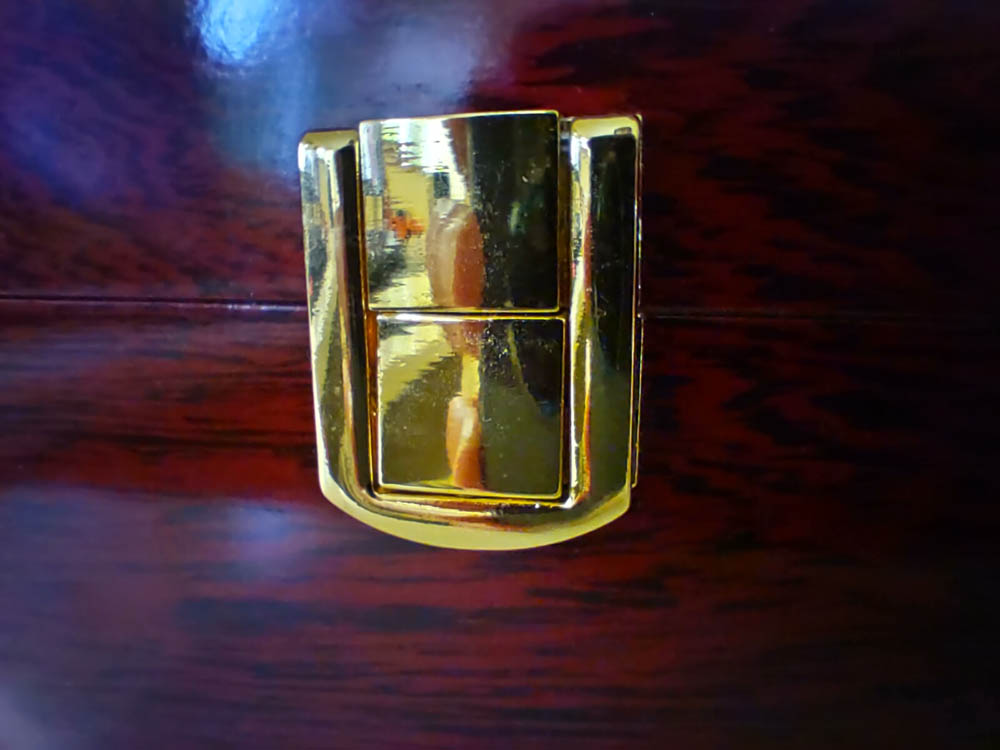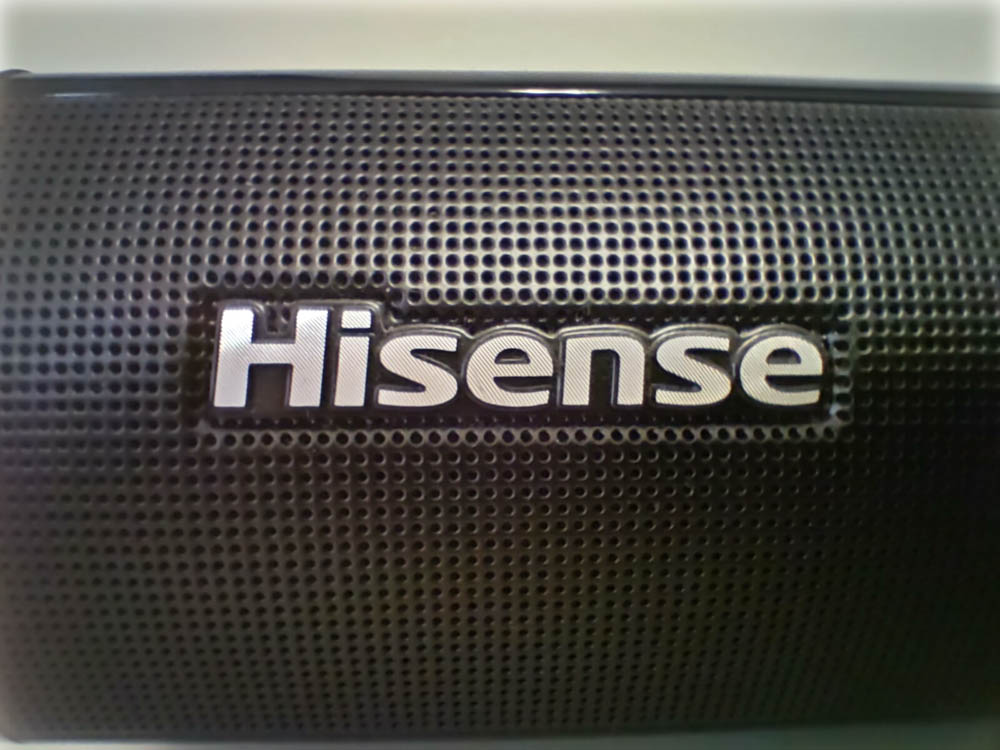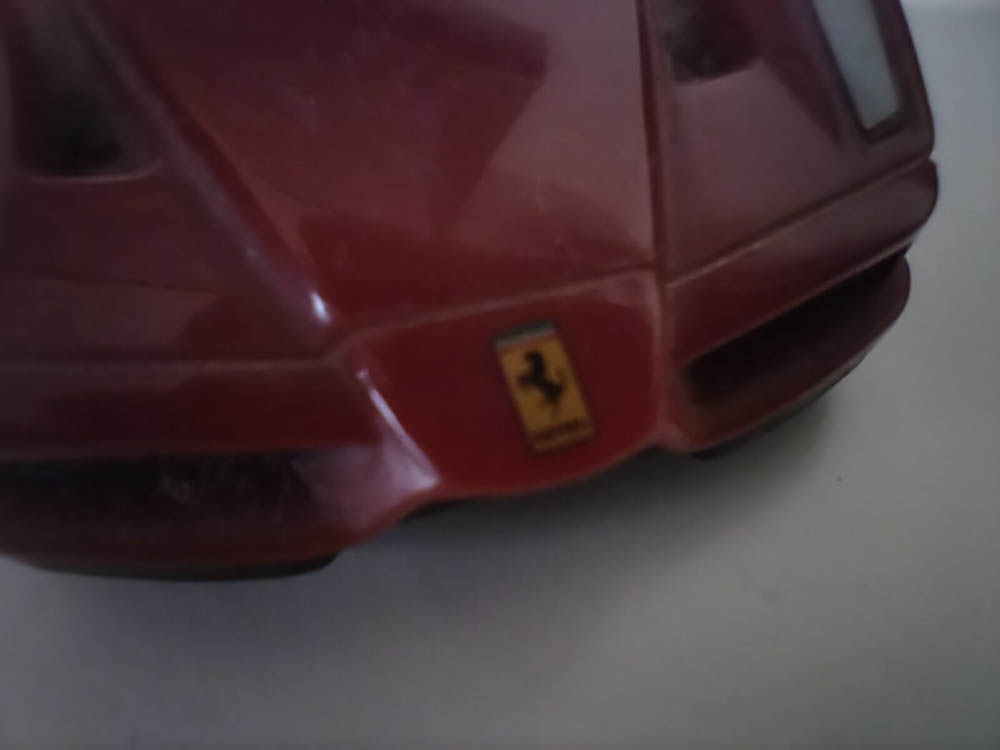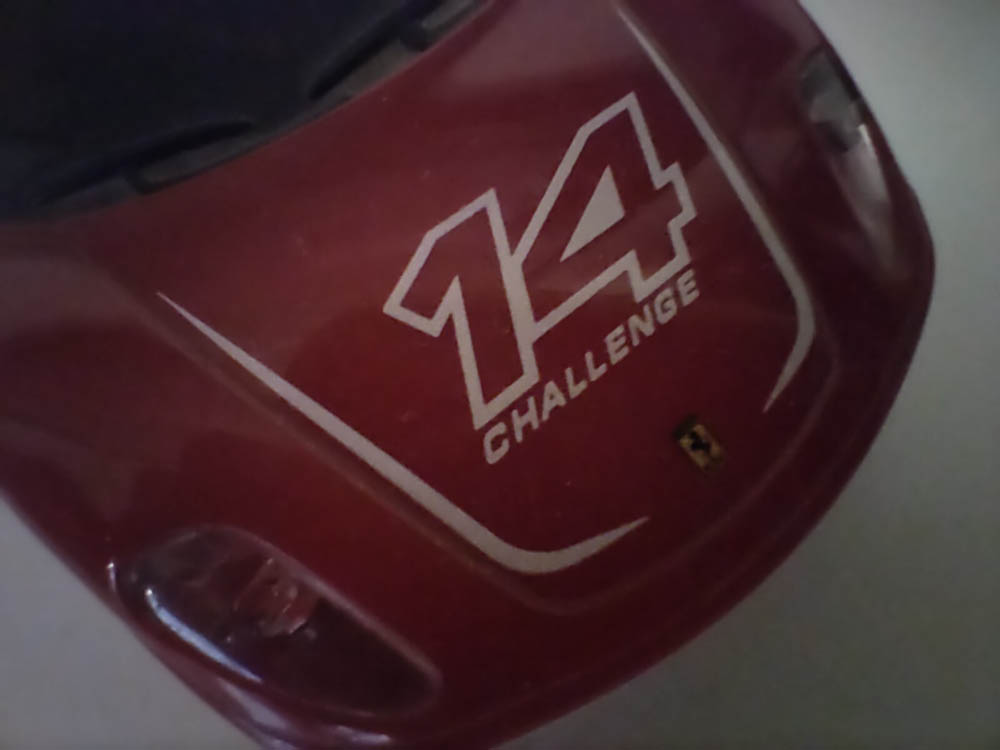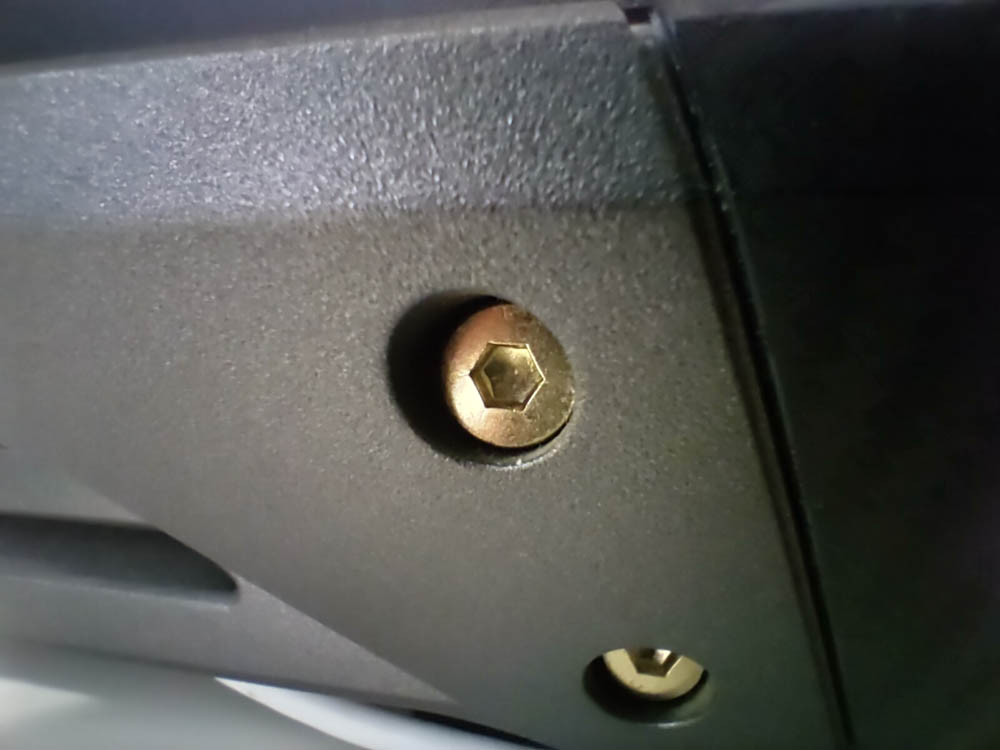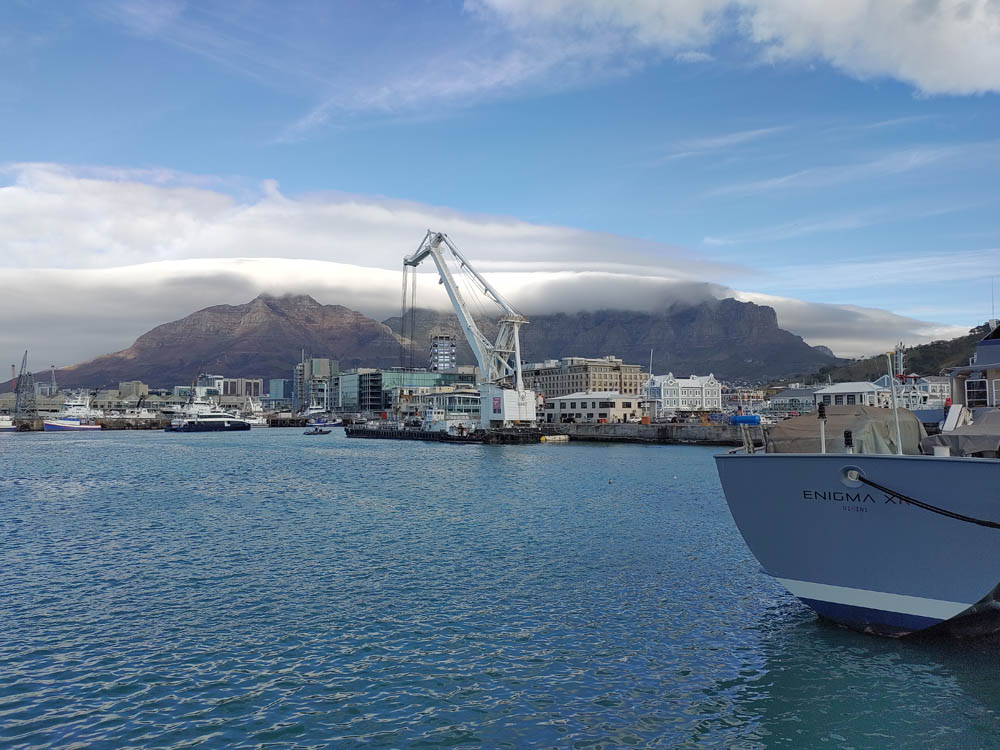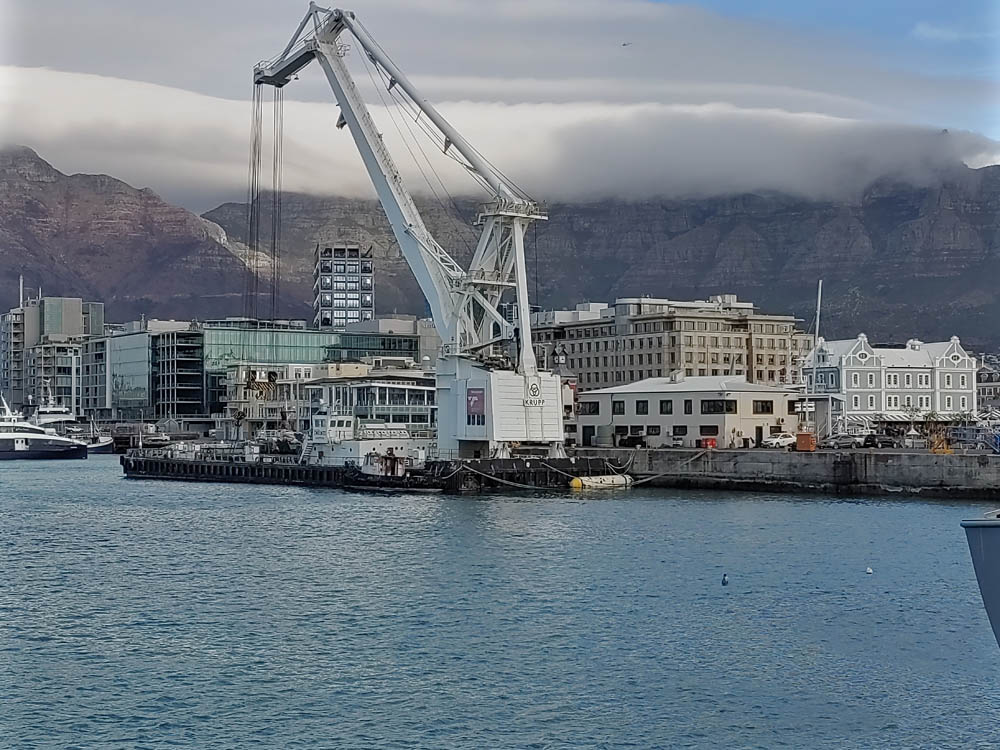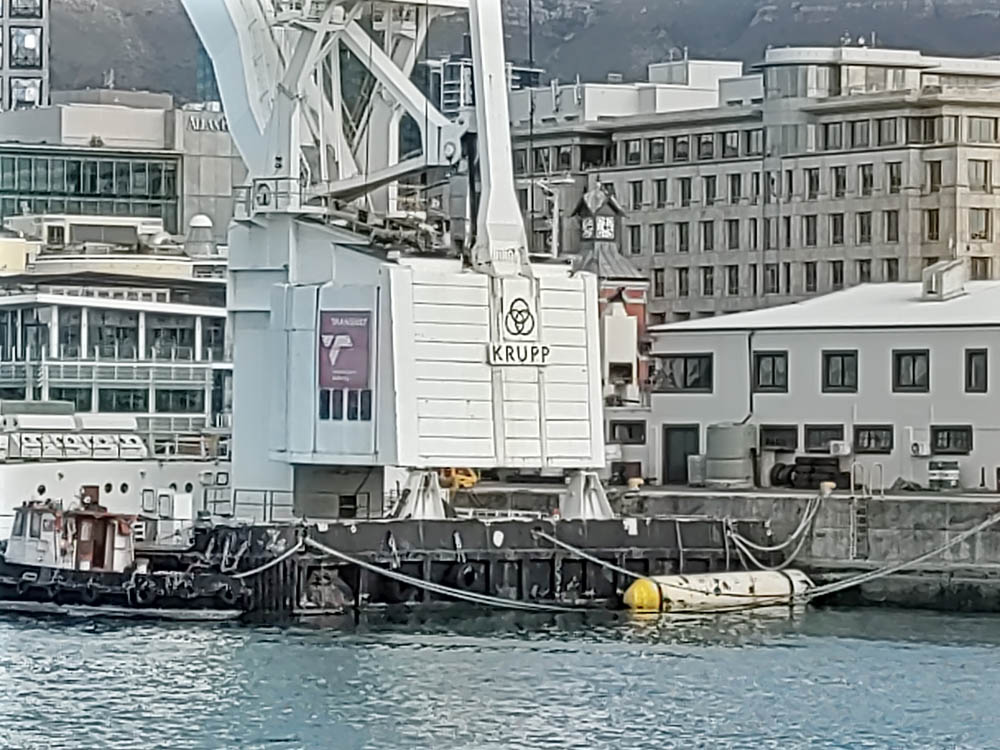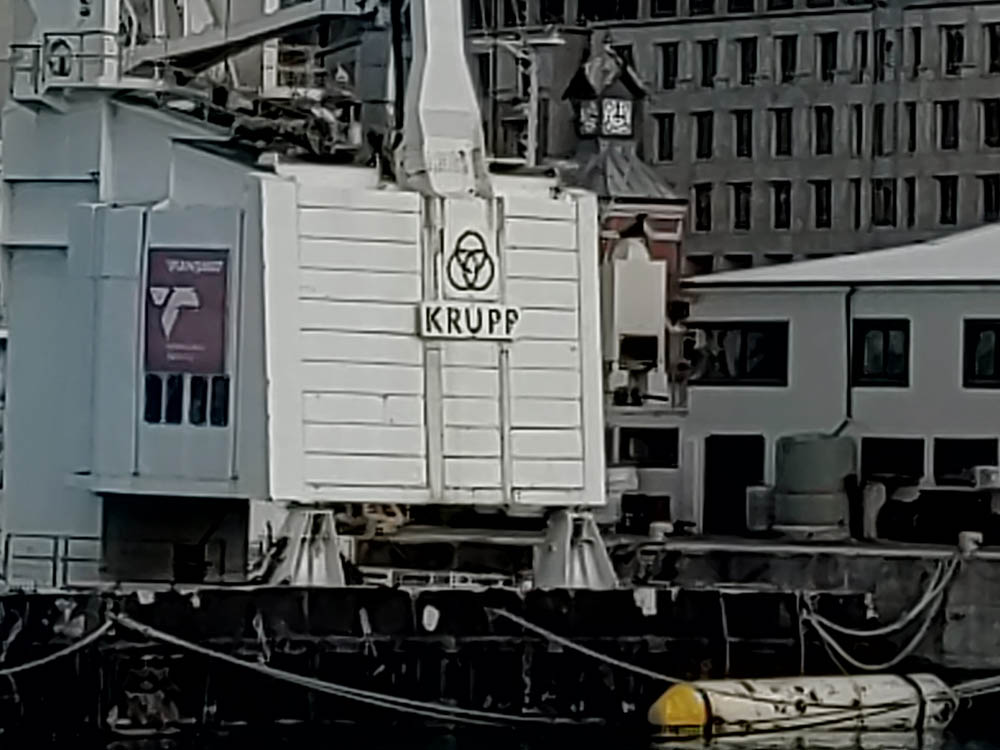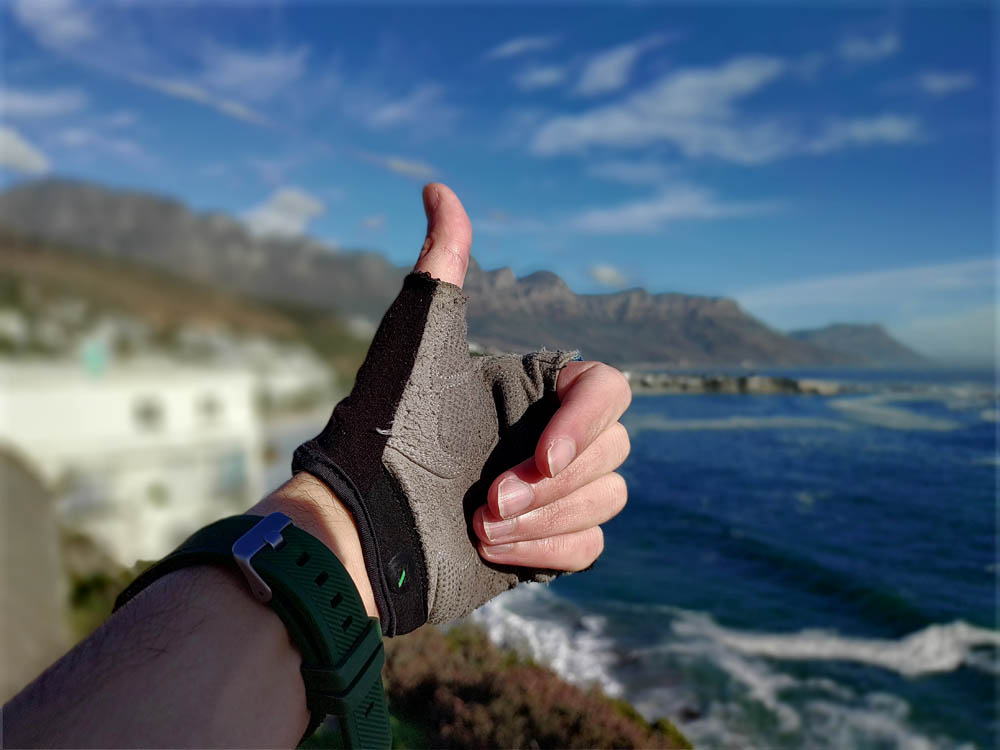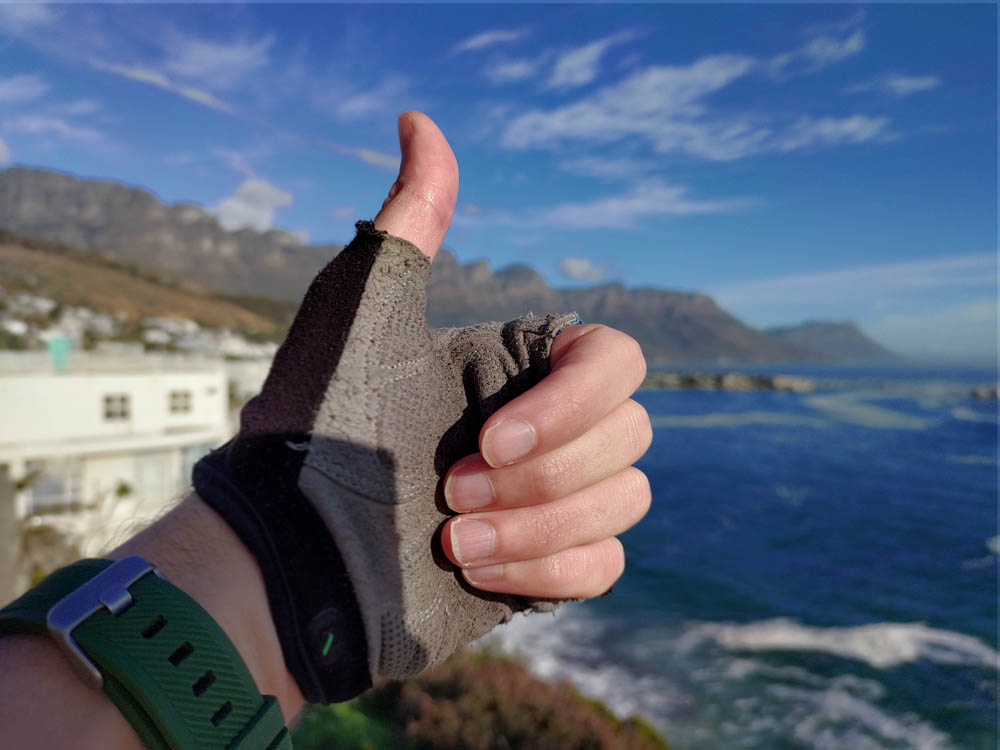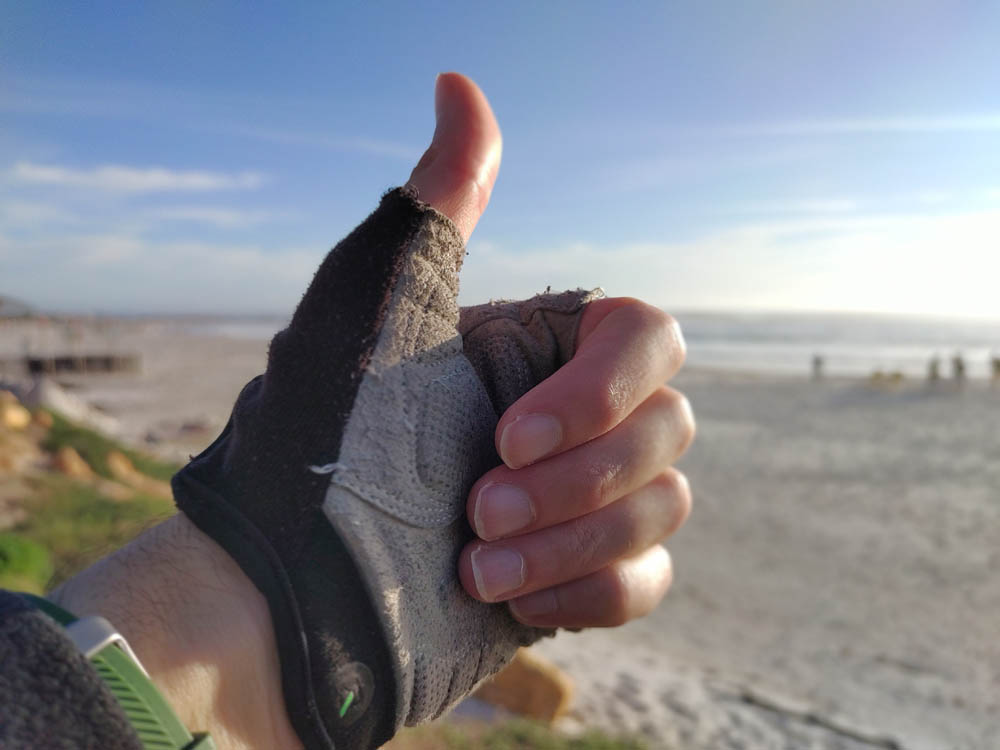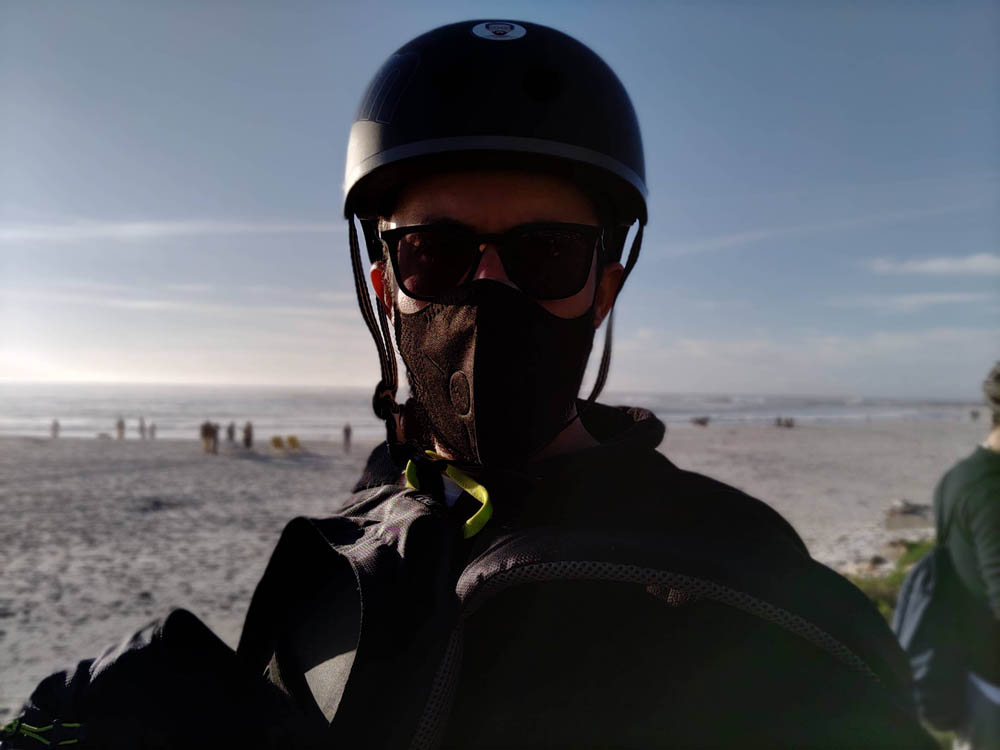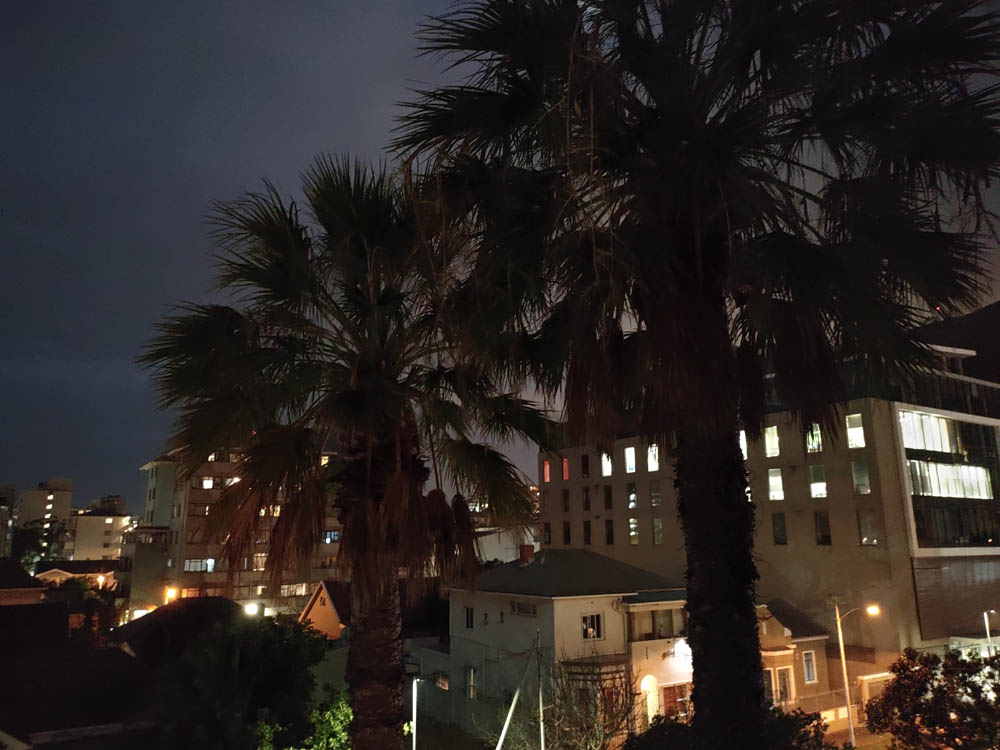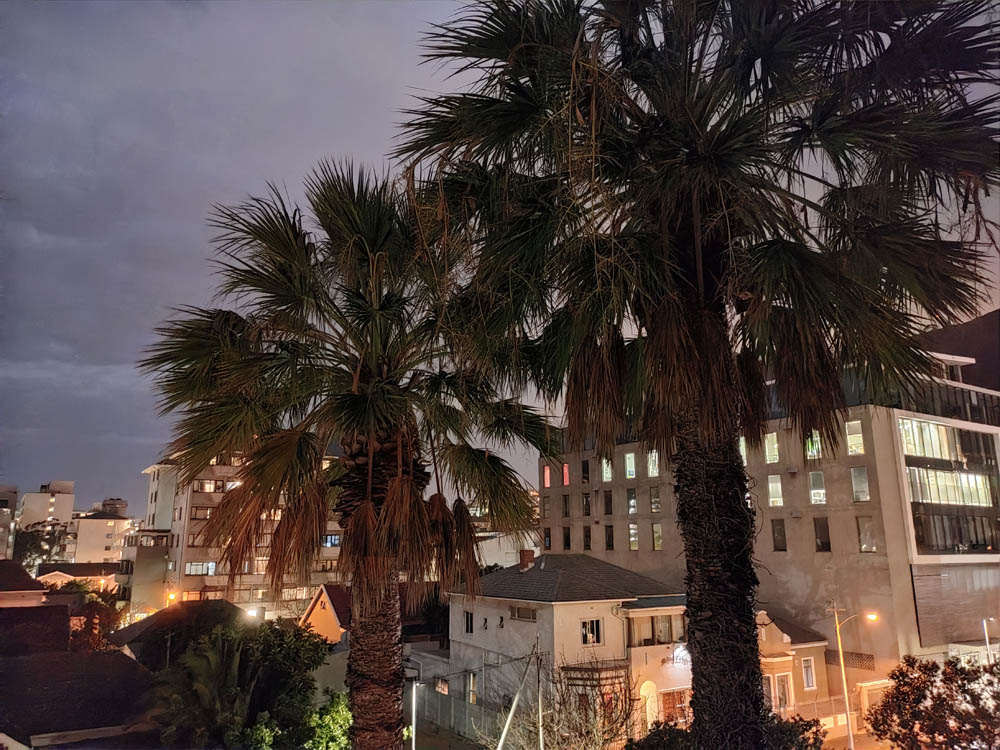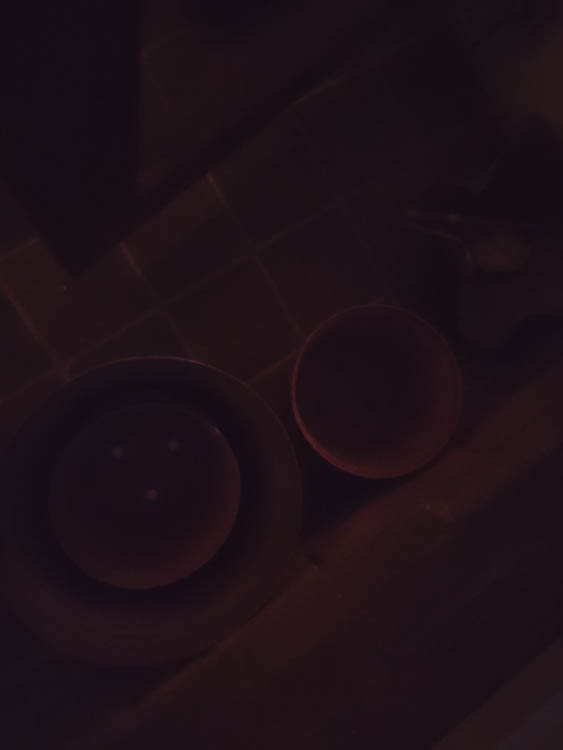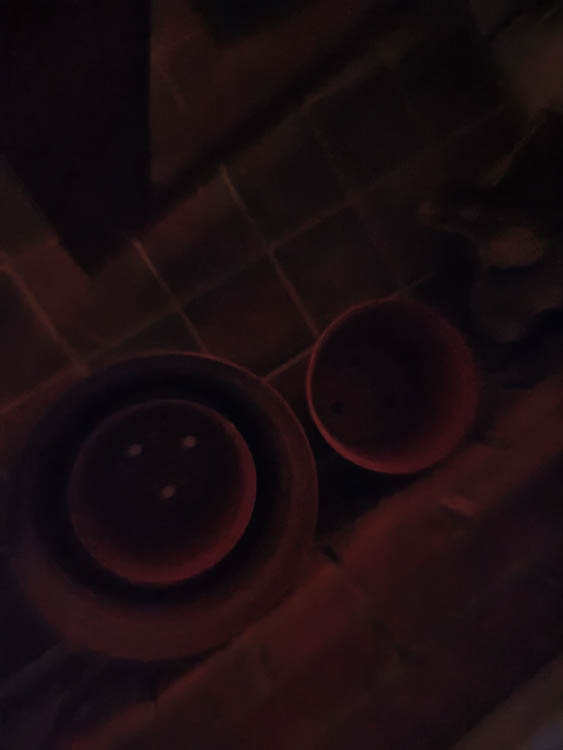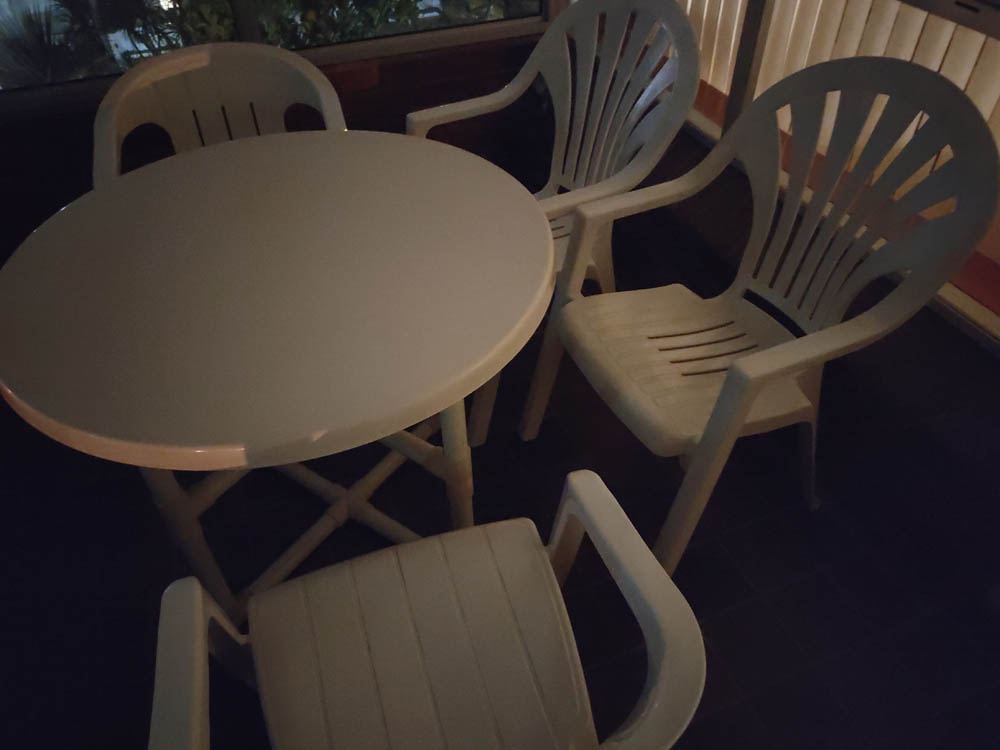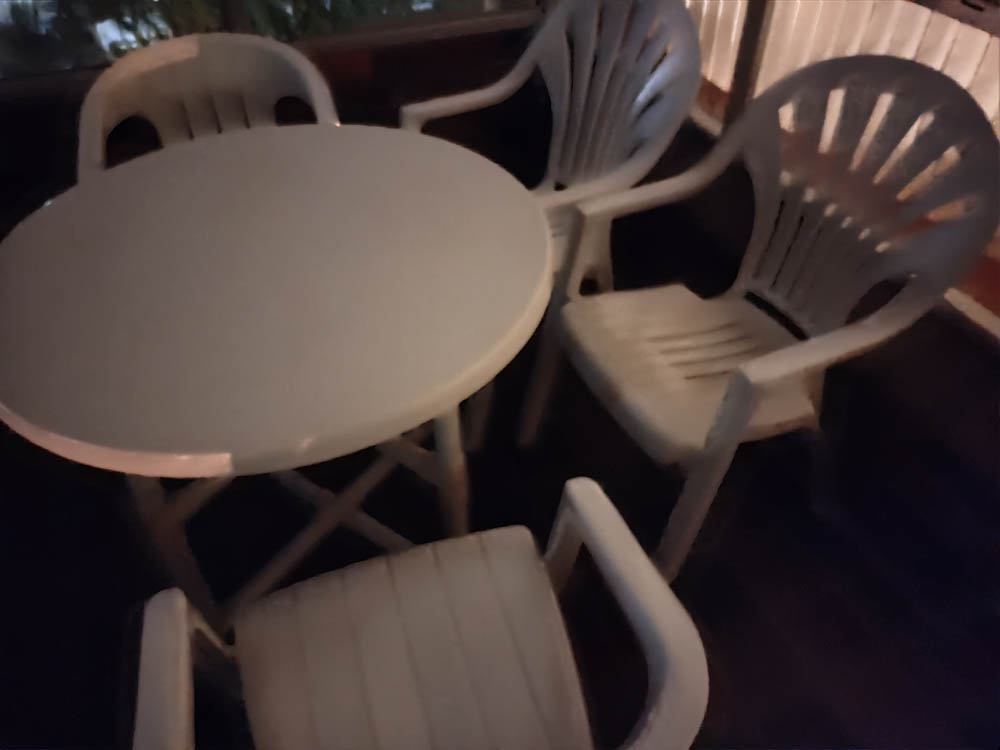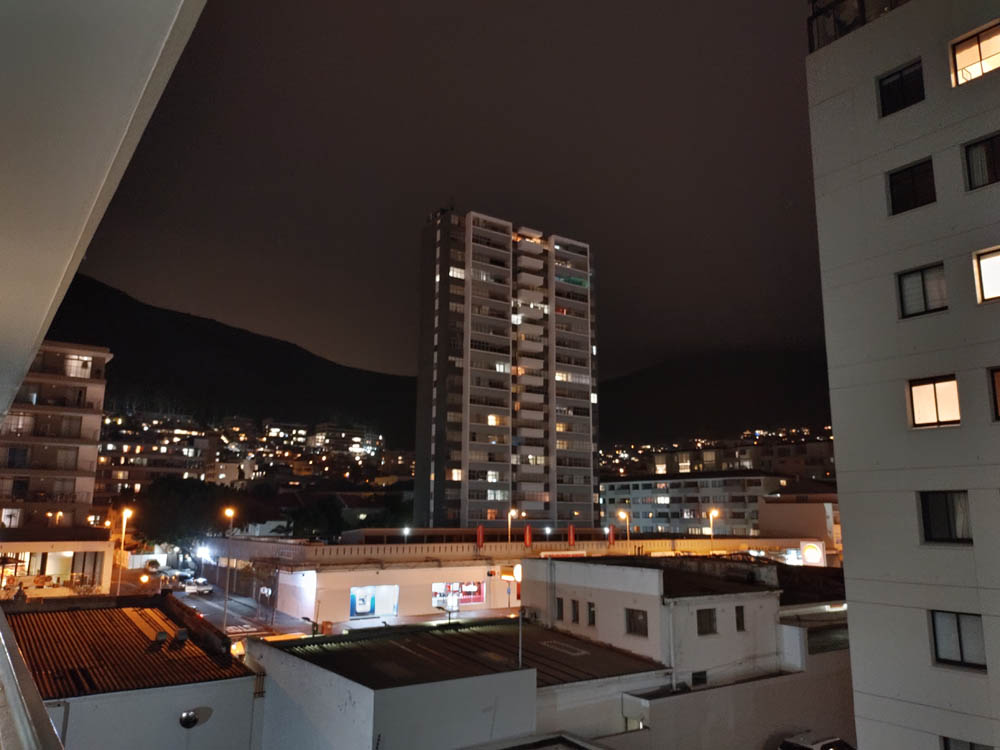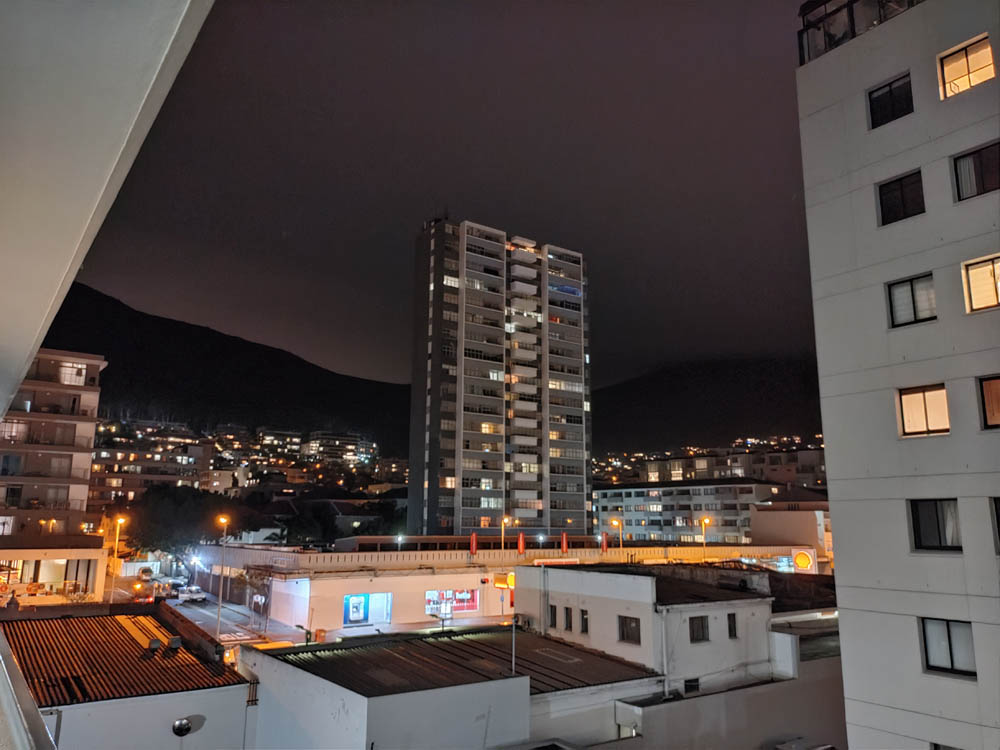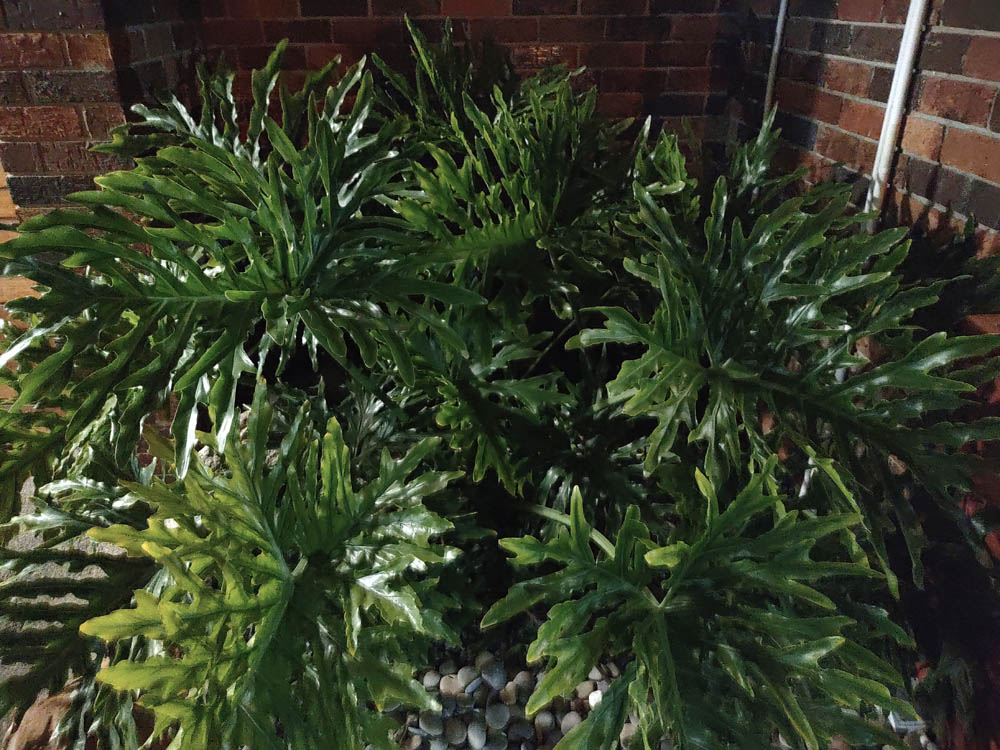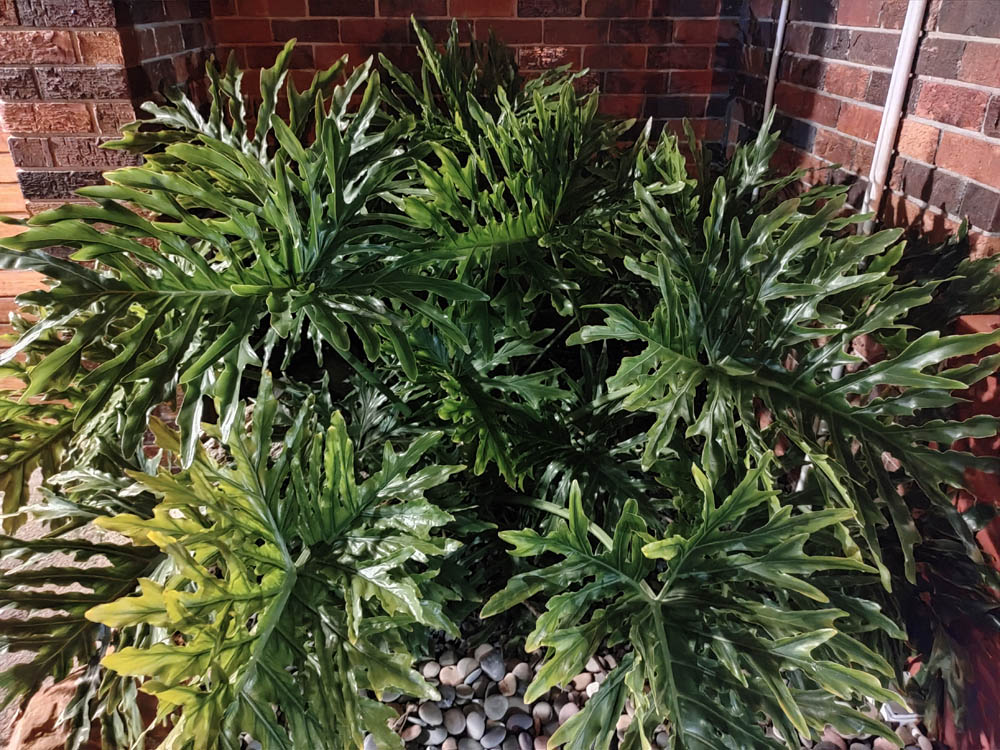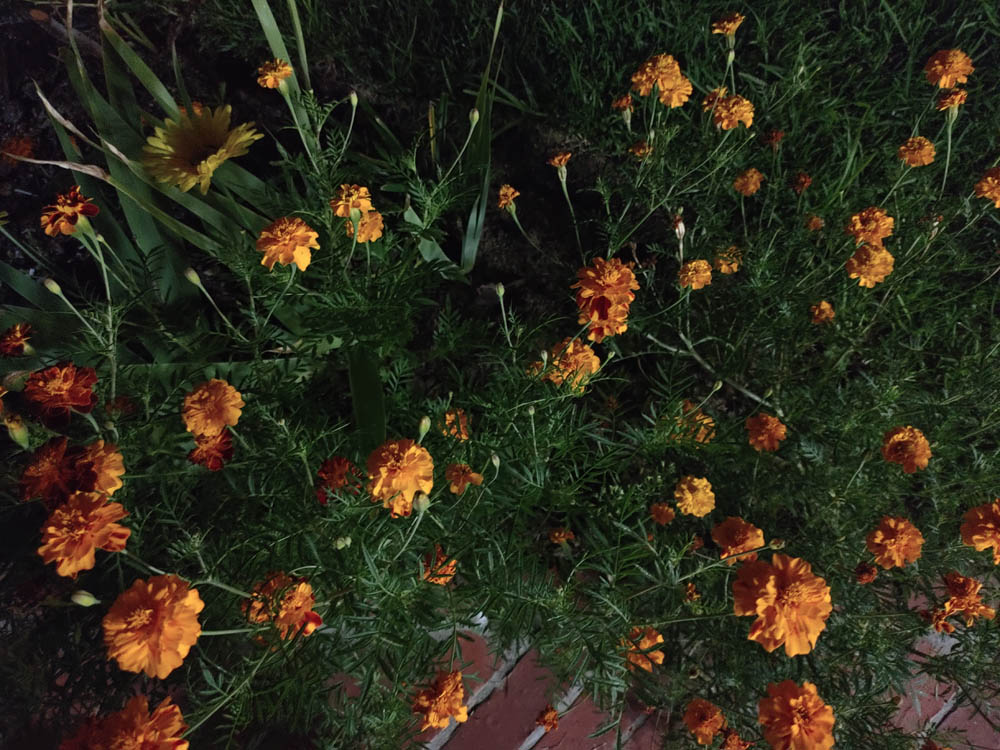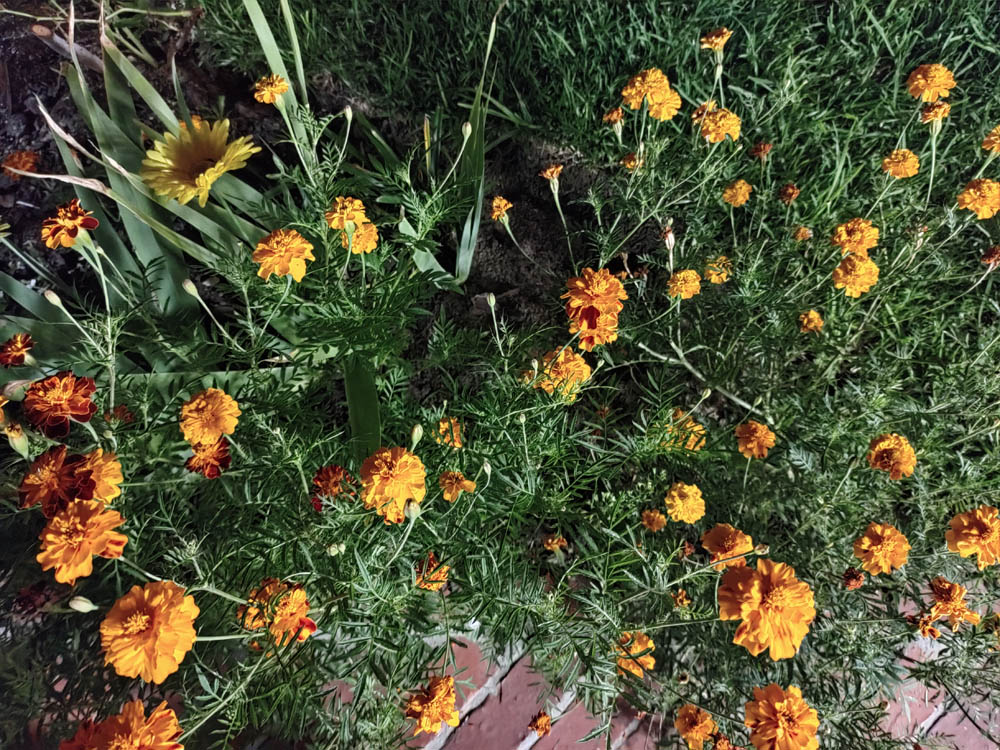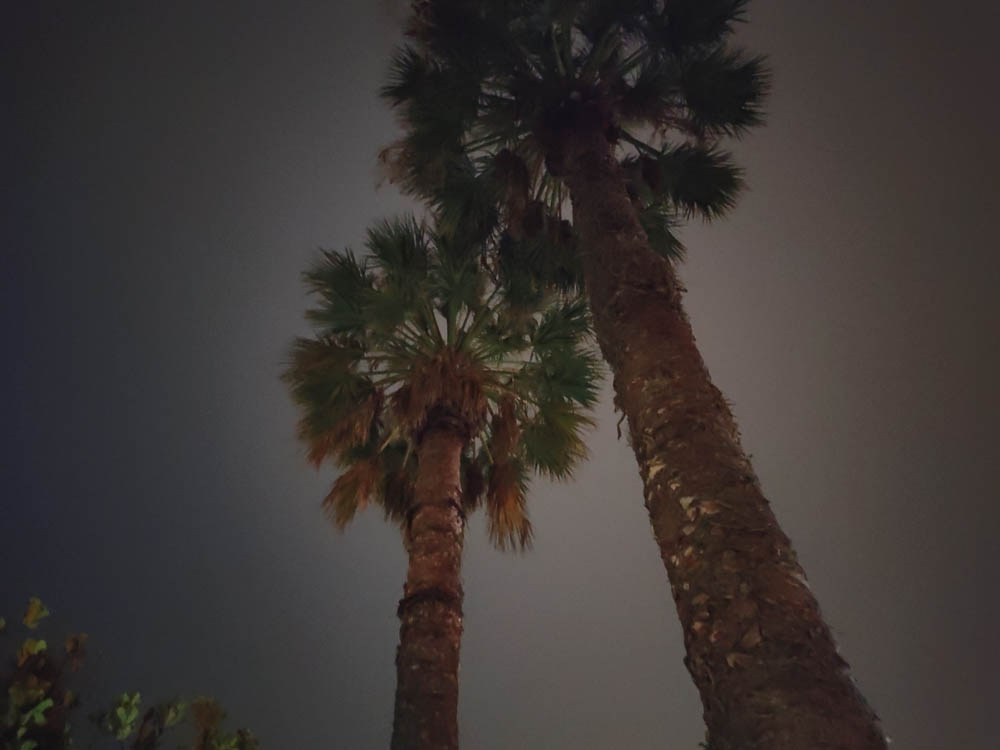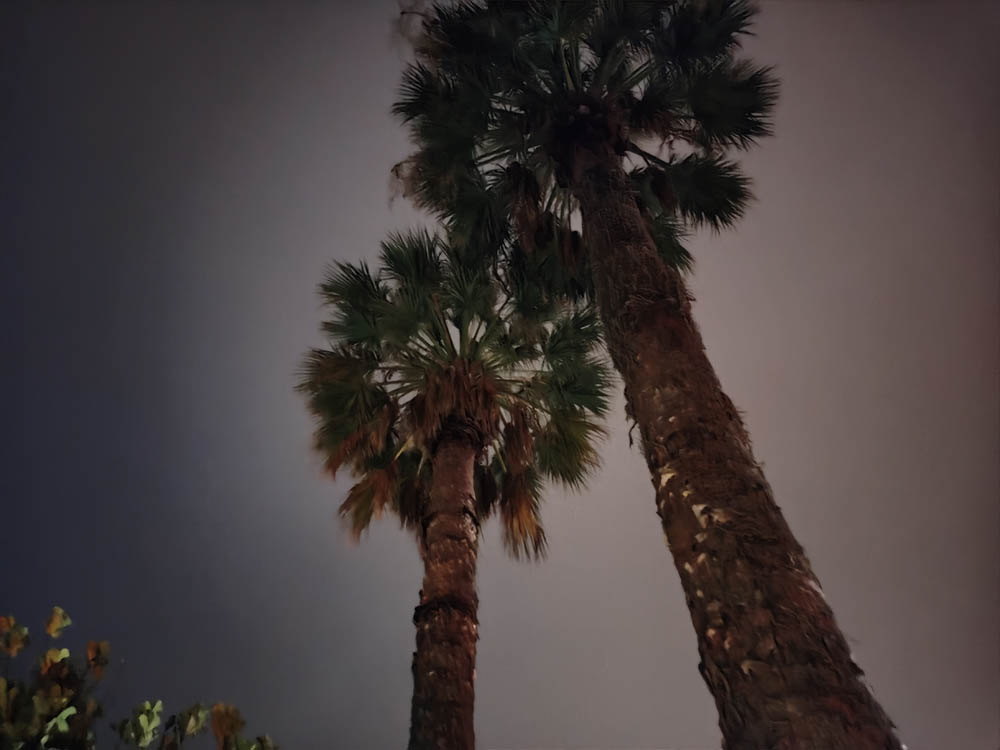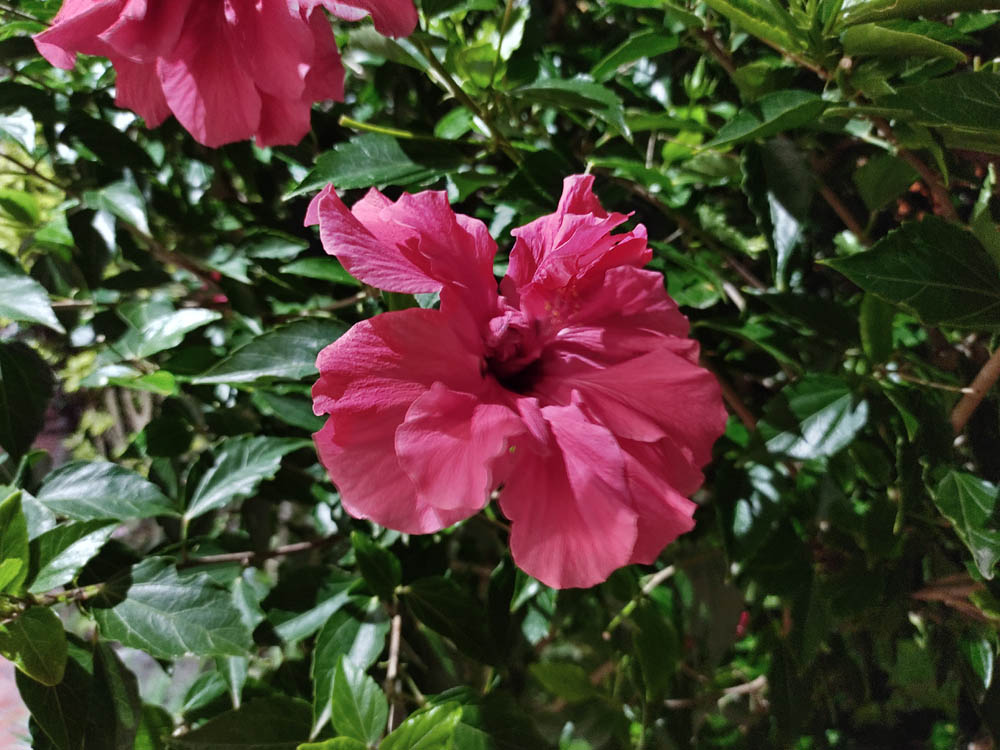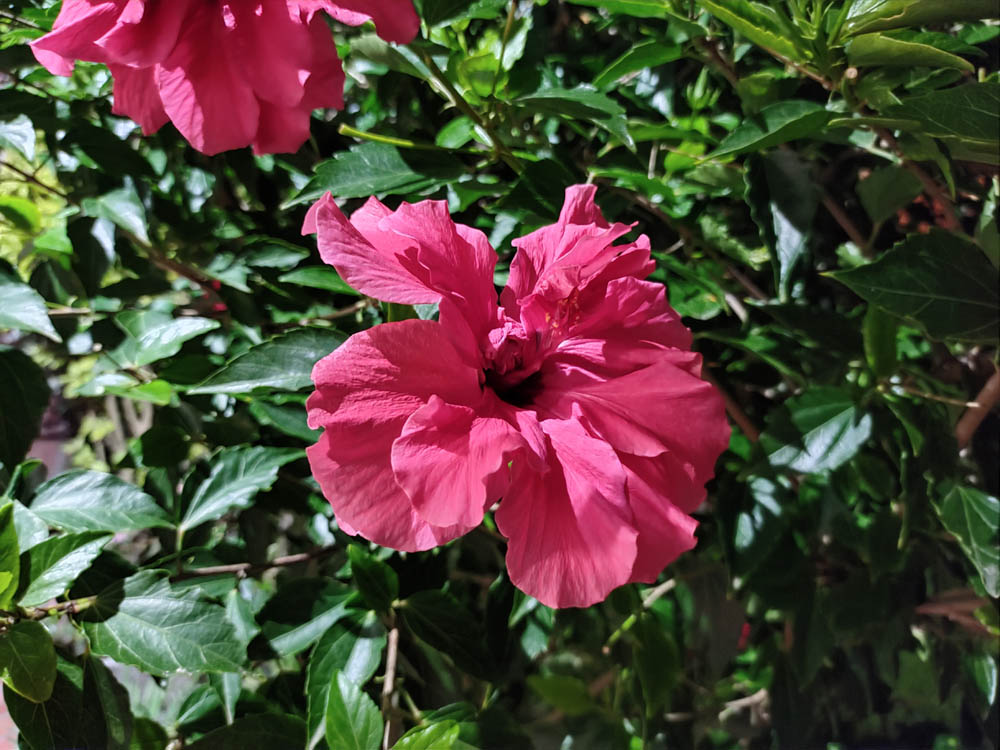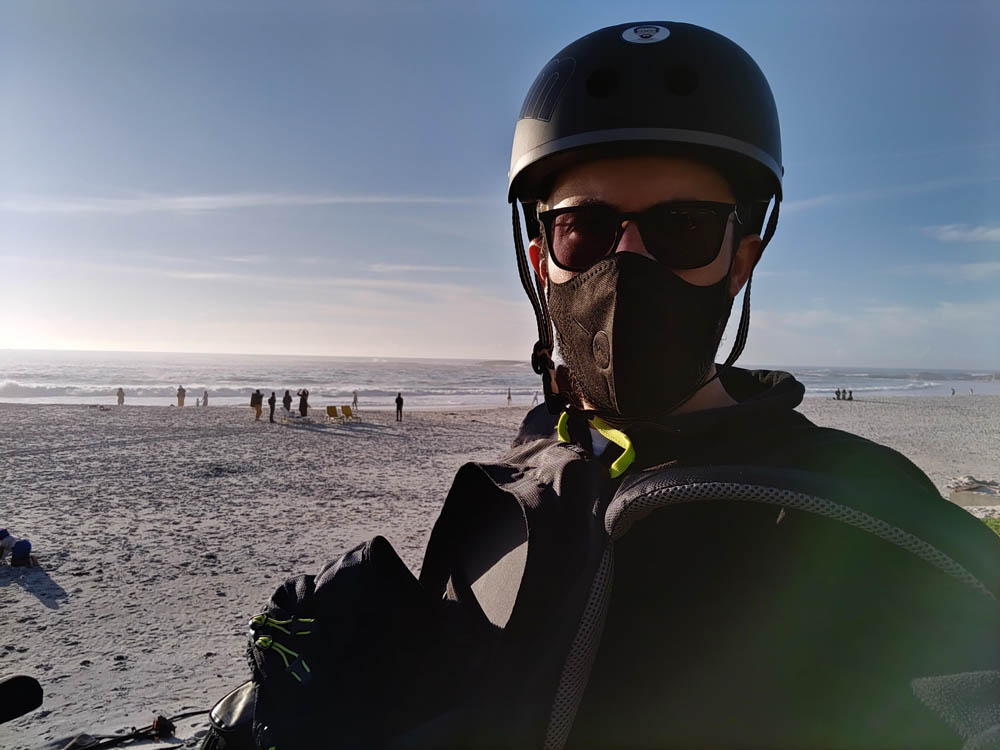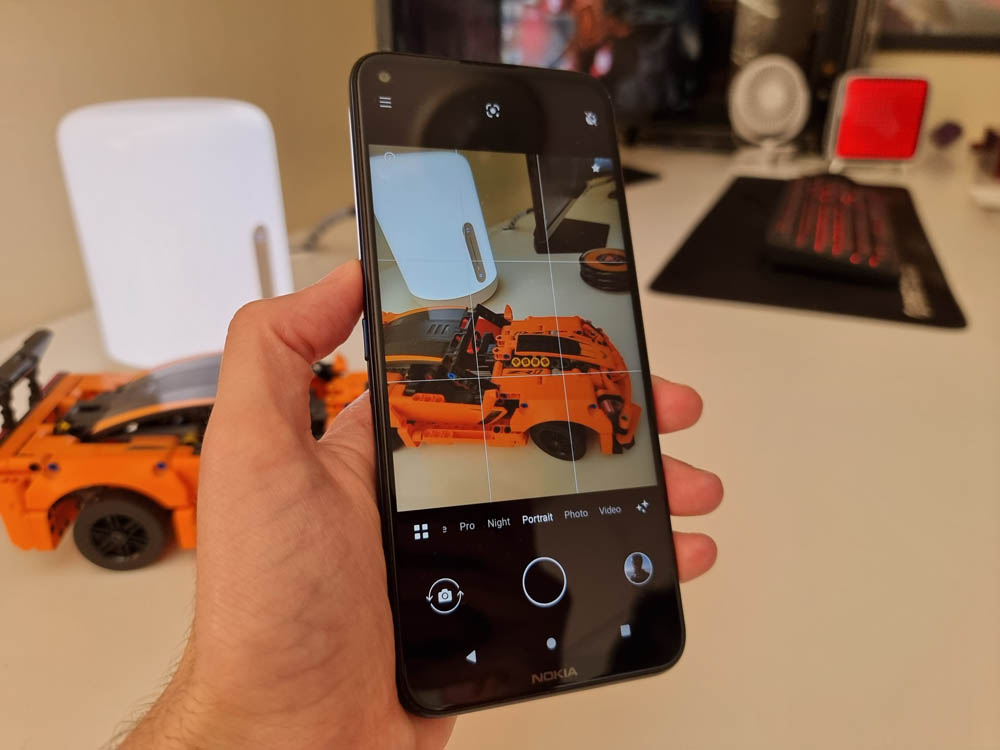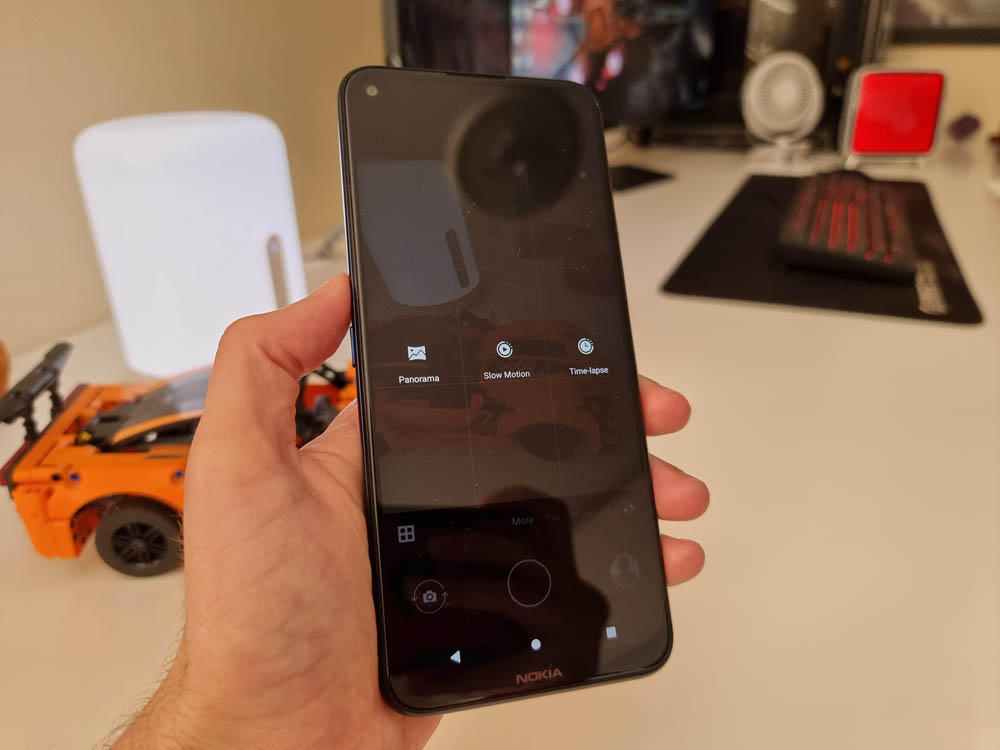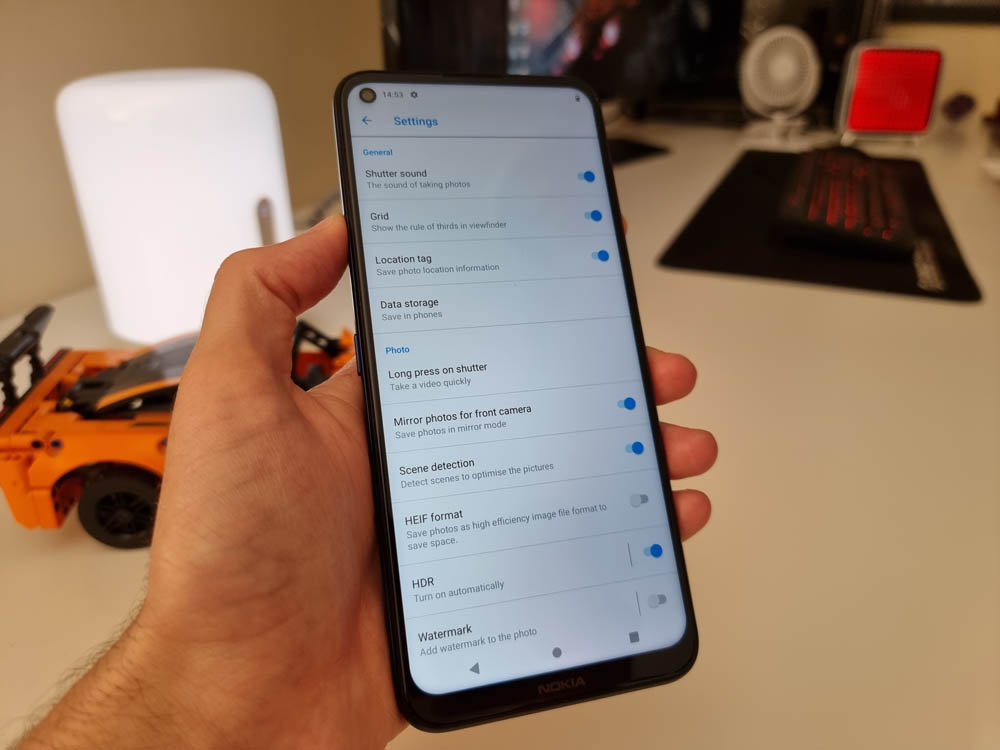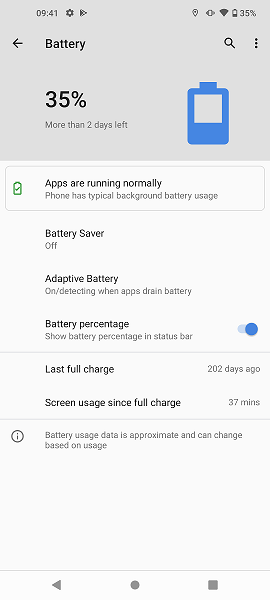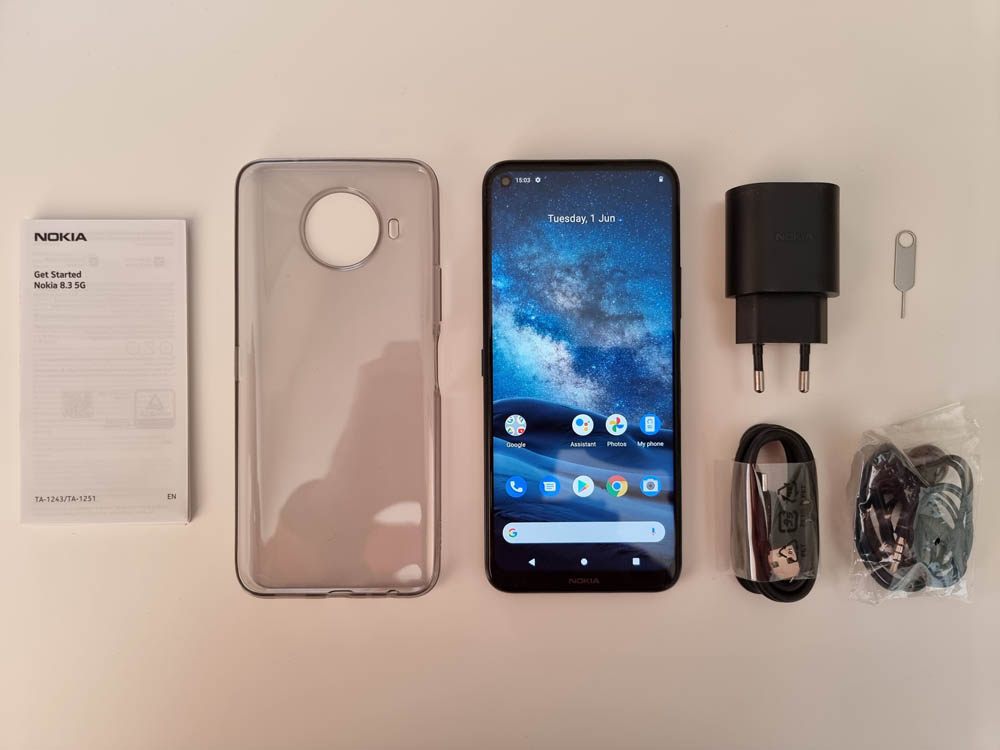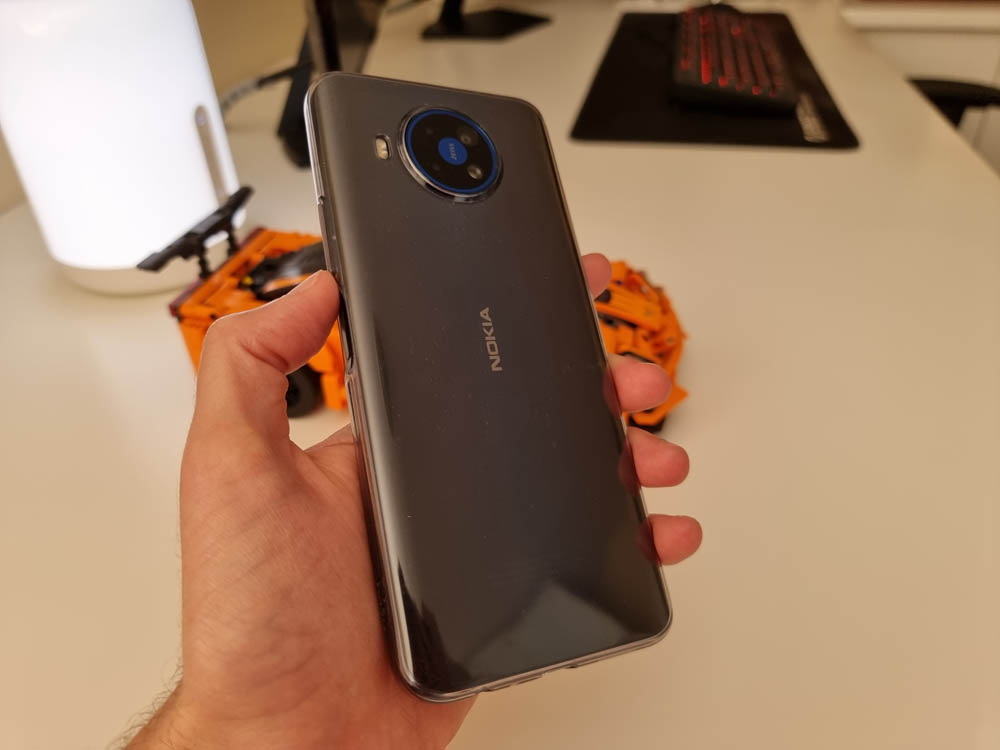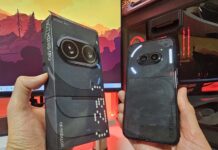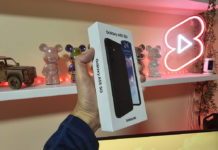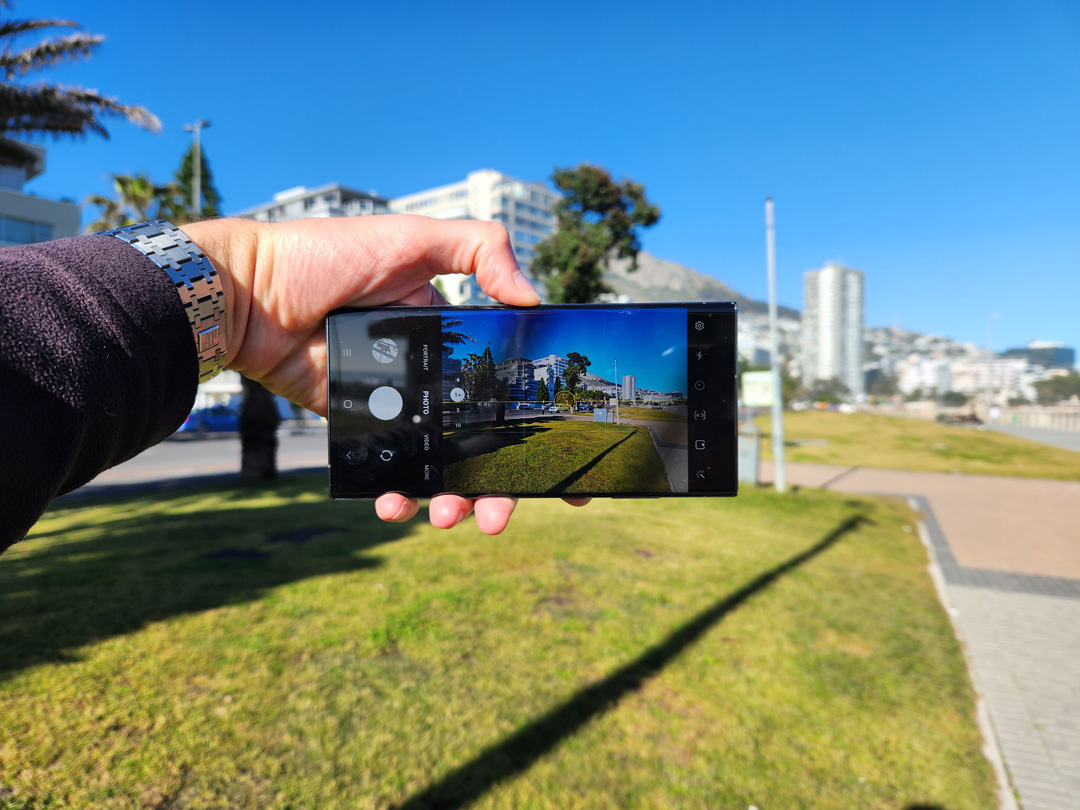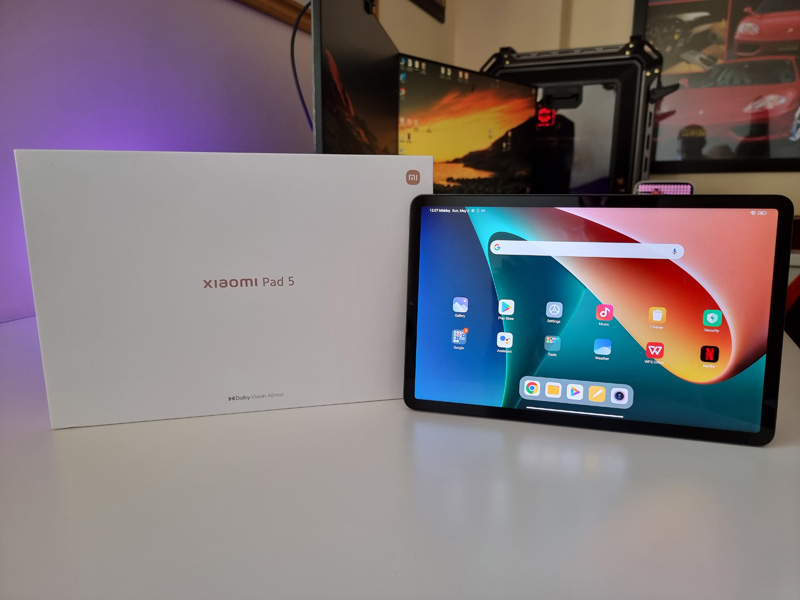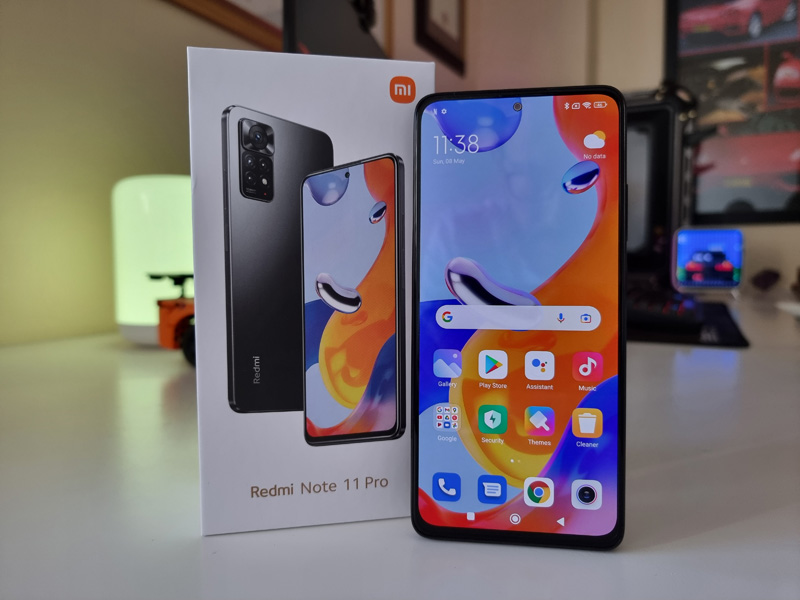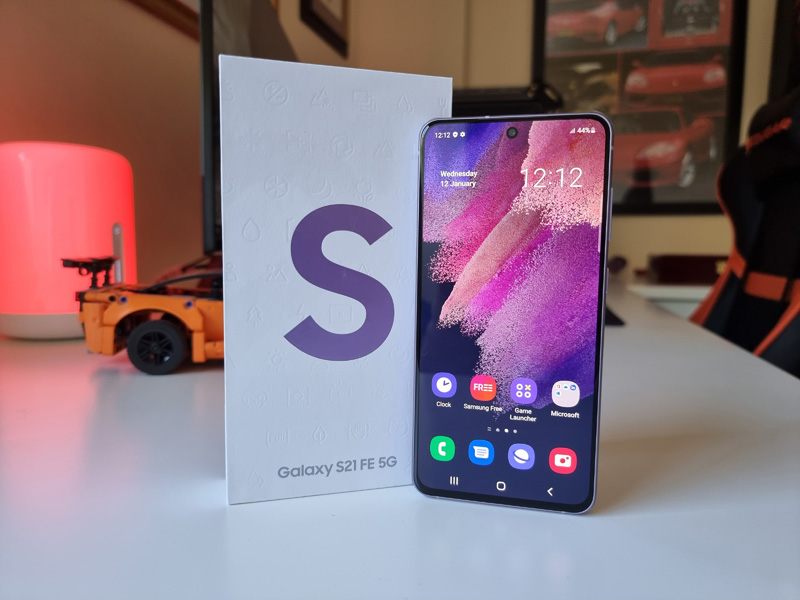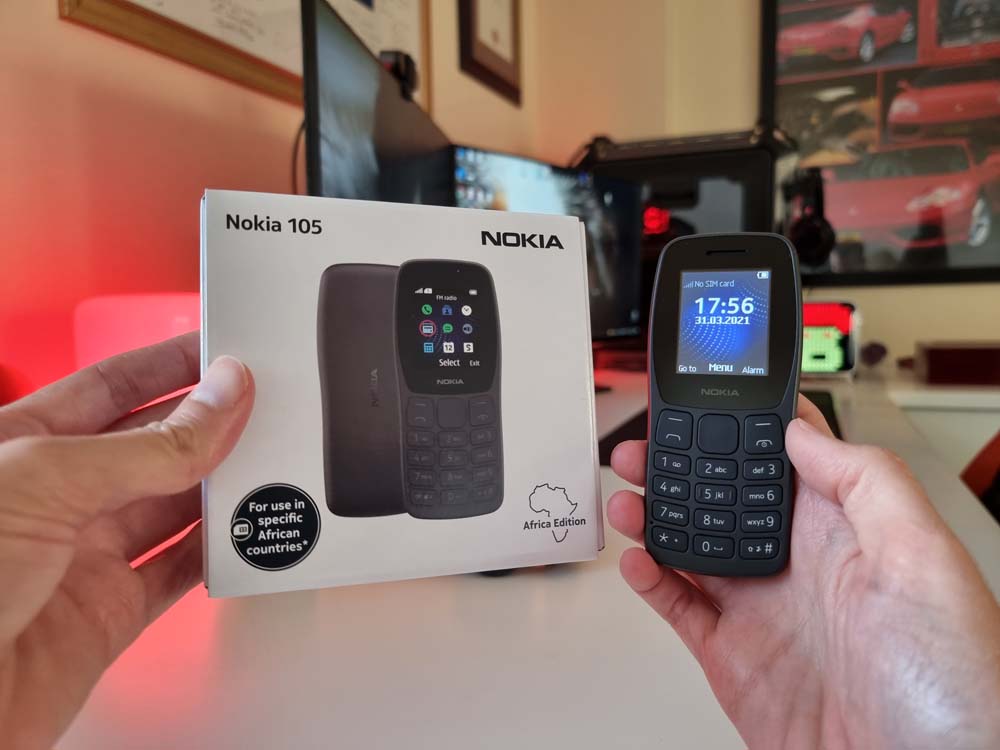The Nokia 8.3 5G is the first 5G device that Nokia and HMD have released. I have reviewed a few Nokia phones such as the Nokia 2.3 and the Nokia 5.3, which were more mid-range devices. I spent some time with the Nokia 8.3 to find out more about it.
Design:
Picking up the Nokia 8.3 5G, one can feel that the Nokia 8.3 has a premium build quality. The rear of the device is made of curved glass and has a circular camera unit that is in the top centre of the device.
The camera module does stick out a bit, so the device does not sit flush on the surface.
While the frame is made of plastic, the device still has a premium feel. The device only comes in one colour, called Polar Night, which is a shade of blue. The back has a cool effect that plays with the light.
The front of the device is taken up by the large tall display with thin bezels on the sides and a thicker lower bezel with Nokia branding on the bottom of the display. You also get a speaker and a pinhole selfie camera located on the left of the display.
On the right side of the device, you will find an SD Card/Memory Card tray, a volume rocker and the power/unlock button which also houses the fingerprint sensor. The Google Assistant button is located on the left, but I didn’t really find myself using this. On the bottom is the USB Type- C port, the speaker, microphone and the headphone jack (Yes Nokia still has one and I love it).
Display:
The display, which measures 6.81” certainly is large but thanks to its Pixelworks visual processor and its support of FHD+ (1080 x 2400 pixels) with adaptive display, you get rich colours and picture-perfect quality. The display is an IPS display and has Low Blue Light certification which ensures that it is easy on the eye. The display goes bright enough to be visible under the sun.
Performance:
Powered by a Qualcomm Snapdragon 765G Octa-Core Processor with 8GB of RAM, the Nokia 8.3 runs smoothly and apps load quickly. I found the phone handled multitasking as well as mobile gaming well. Switching between lenses, and snapping photos, did not seem to cause any performances issues.
Security:
The Nokia 8.3 can be unlocked using your fingerprint, via the fingerprint sensor located on the power button. The sensor picks up fingerprints quickly and smoothly, providing a seamless way to unlock the device. There is also face unlock and the usual pin and pattern methods.
Camera:
The Nokia 8.3 has 5 lenses. That is, 4 on the rear and a selfie camera on the front.
Let’s take a look at the rear camera first. The four lenses are made up of a 64 MP f/1.9 wide-angle lens, A 12 MP f/2.2 120˚ ultrawide lens, and then a 2 MP macro and a 2 MP depth lens. You also get rear flash and autofocus. How do the different lenses perform?
The 64 MP lens captures detailed, vibrant and sharp images. When shooting in the default camera mode, you are actually capturing images in 16MP. To capture in 64MP, you have to switch to the pro mode. I captured some awesome photos in the daytime using the auto mode. I also had HDR on which gives the images a more vibrant look. You can see some sample photos below.
The 12 MP ultrawide lens lets you get more in the frame. The photos look very similar to the main lens and I did not notice any distortion.
The 2 MP macro lens lets you get up close and captured the finer details. It is important to be super steady and have light, otherwise, the subject will be blurry/dark.
The Nokia 8.3 can zoom in up to 10x. There is a loss of detail when you go all the way in, but the image is still usable.
To create photos with a bokeh effect, the 2 MP depth lens is used. This lens did a decent job at differentiating between subject and foreground. There are also filters that you can use should you want hearts or stars as bokeh, if that is your thing.
If you are shooting photos in low light conditions or at night, you can use the night mode which adds more brightness to the images. I found that photos taken in night mode were not only brighter but also more focused than photos taken using the standard lens.
The selfie camera is a 24 MP wide-angle lens with f/2.0 I found that the selfie camera did a great job at ensuring that the subject stays in focus. These photos were crisp and vibrant.
Video can be recorded in 4K@30/60fps, 1080p@30/240fps, 720p@960fps. You can use ZEISS cinematic effects to add anamorphic and blue flares to your footage on the go. The Action Cam mode can be used should you need smoother video. This mode uses a higher frame rate of 60 fps to do so. There is also Low light video that helps lighten dark areas in low light conditions. When recording videos, the audio will sound next level, thanks to the OZO audio, which records the full 360° sonic range in true-to-life accuracy.
The Dual-Sight mode lets you record with two lenses at the same time. You can use any combination of the main, ultrawide and front camera in a side by side setup.
Here is some video footage that I recorded:
The camera app has all the modes and settings needed. To swap between different lenses/modes, simply swipe left or right. Or tap an icon to turn a mode on. The settings also had loads of options.
Storage:
With 128GB of internal storage and the support of a 400GB MicroSD card, the Nokia 8.1 should not run out of space any time soon. You can also use Google One to backup your content to your Google Drive.
Software:
The Nokia 8.3 runs Android 10 out of the box but is upgradeable to Android 11. The phone also runs Android One, meaning that the Nokia 8.3 runs a near-stock version of Android with no bloatware. This means you get a lighter device, with 2 years of upgrades and 3 years of monthly security updates.
Connectivity:
The Nokia 8.3 5G is the first device from HMD that supports 5G. With the support of 5G connectivity, you can get a super-fast connection, should your area support 5G.
Battery:
Powered by a Li-Po 4500 mAh non-removable battery, the Nokia 8.3 is well powered to last you 2 days of use, before charging is need. If you are a heavy user taking loads of photos/videos and sharing on social media, then you are probably looking at 1 day of use. Charging takes just over an hour using the supplied charger which is an 18W Fast charger. The device does support fast charging. To save power, you can turn on the Adaptive Battery mode to limit battery use for apps you don’t use.
What’s in the box:
- Nokia 8.3 5G
- See-through cover
- Get Started Guide
- 18W Fast Charger
- USB Type-C Cable
- Earphones
- Sim tray ejector
The included cover gives you peace of mind straight out the box, so thank you Nokia!
Price:
The Nokia 8.3 5G comes in at R 13,999, which is well priced for what you are getting. One could compare the 8.3 to the Samsung Galaxy S20 FE, which is priced at R16999. The Nokia 8.3 makes sense for someone that is worried about future upgrades, and you can save some money too.
Verdict:
After spending some time with the Nokia 8.3 5G, I started to fall in love with its design, its features, as well as its camera. I did enjoy its near-stock Android experience and the way it performs, no matter the situation. Overall, the Nokia 8.3 is an impressive device and is a good value for money.


